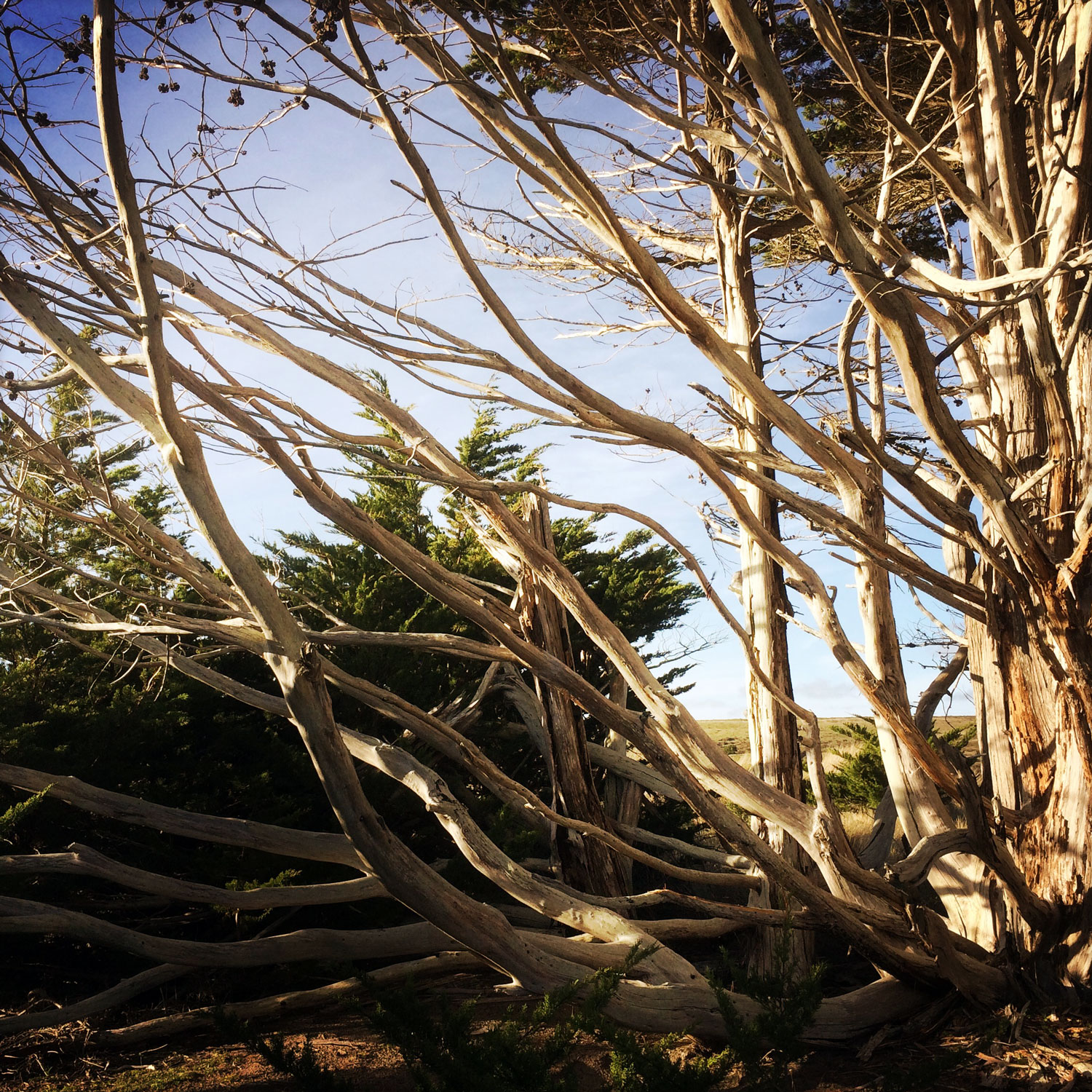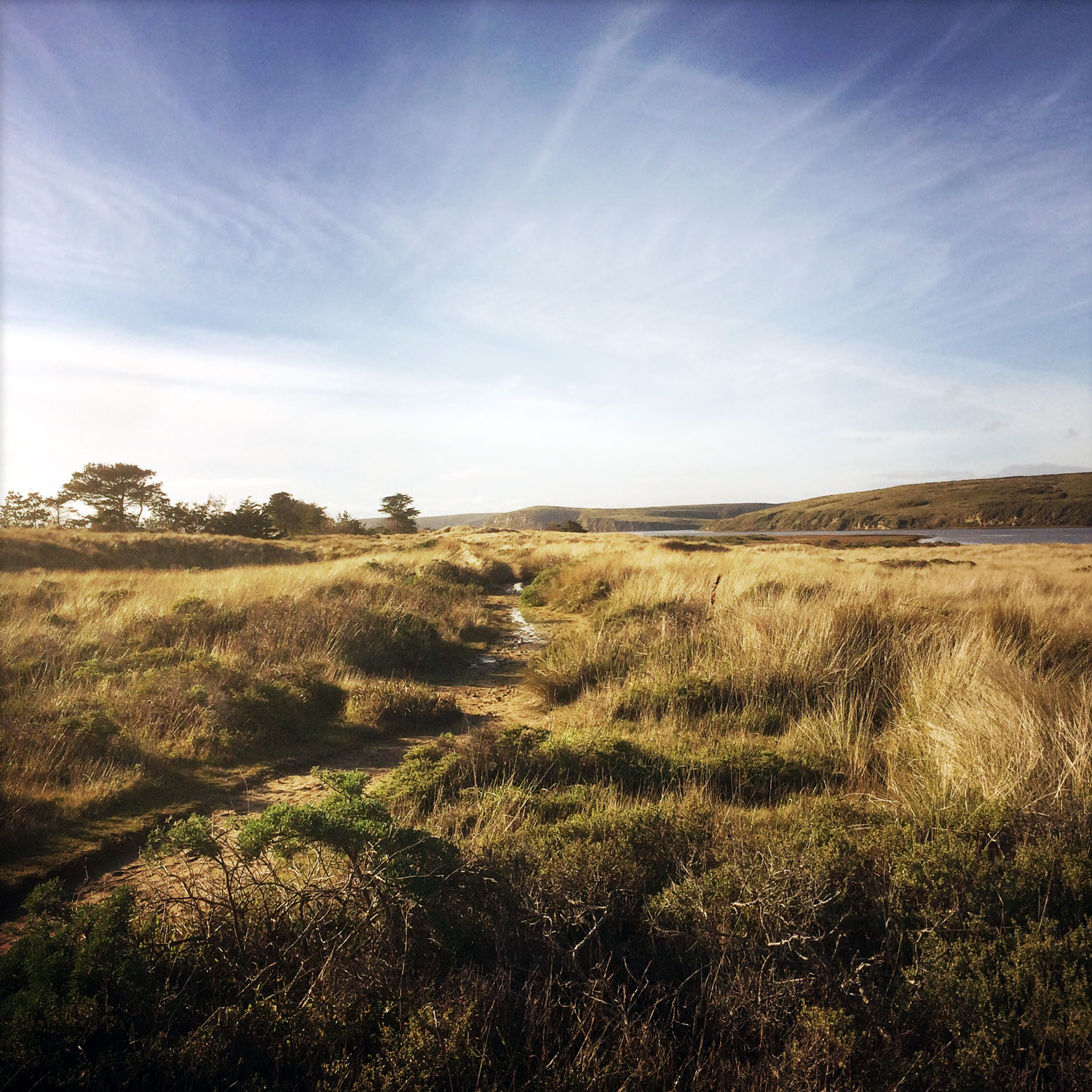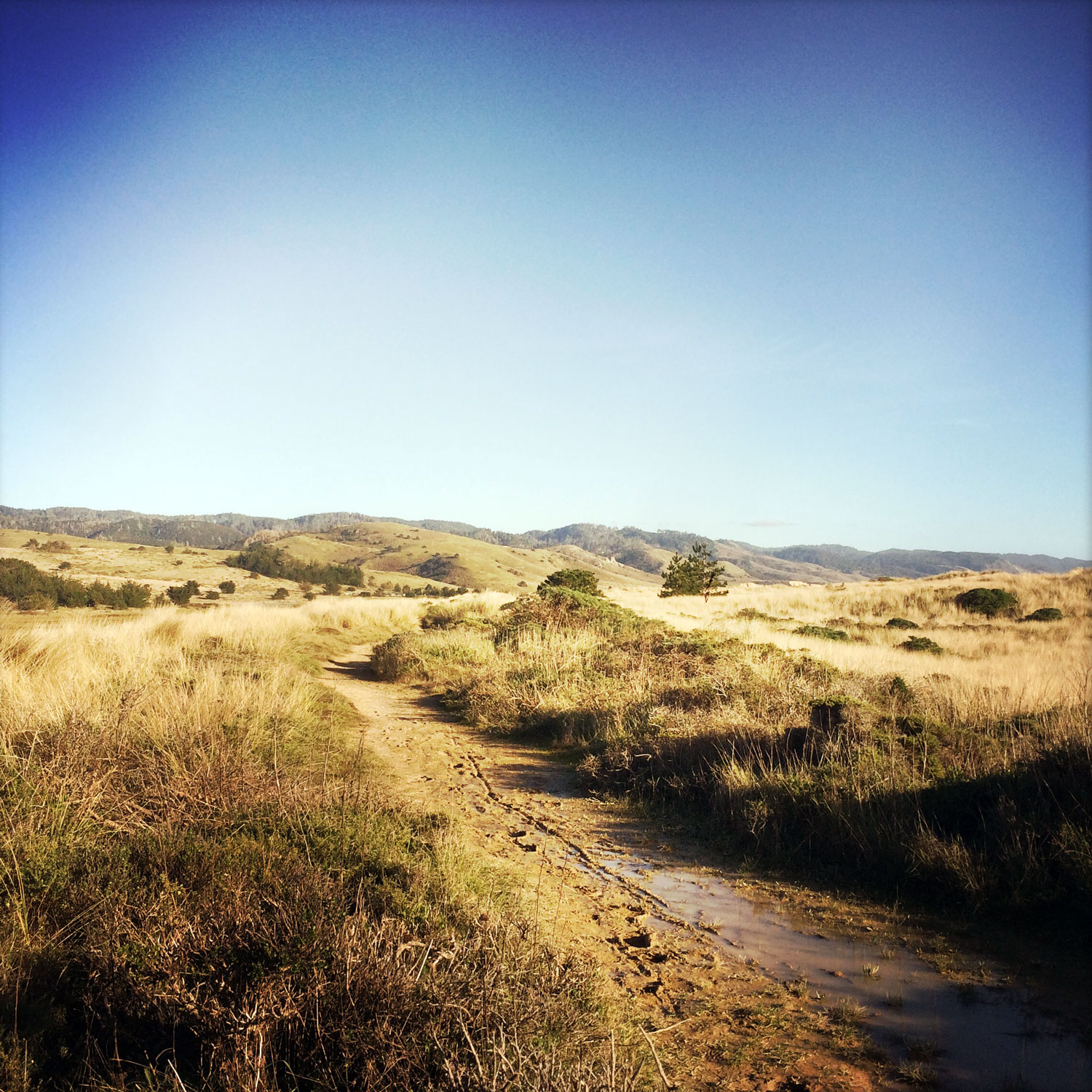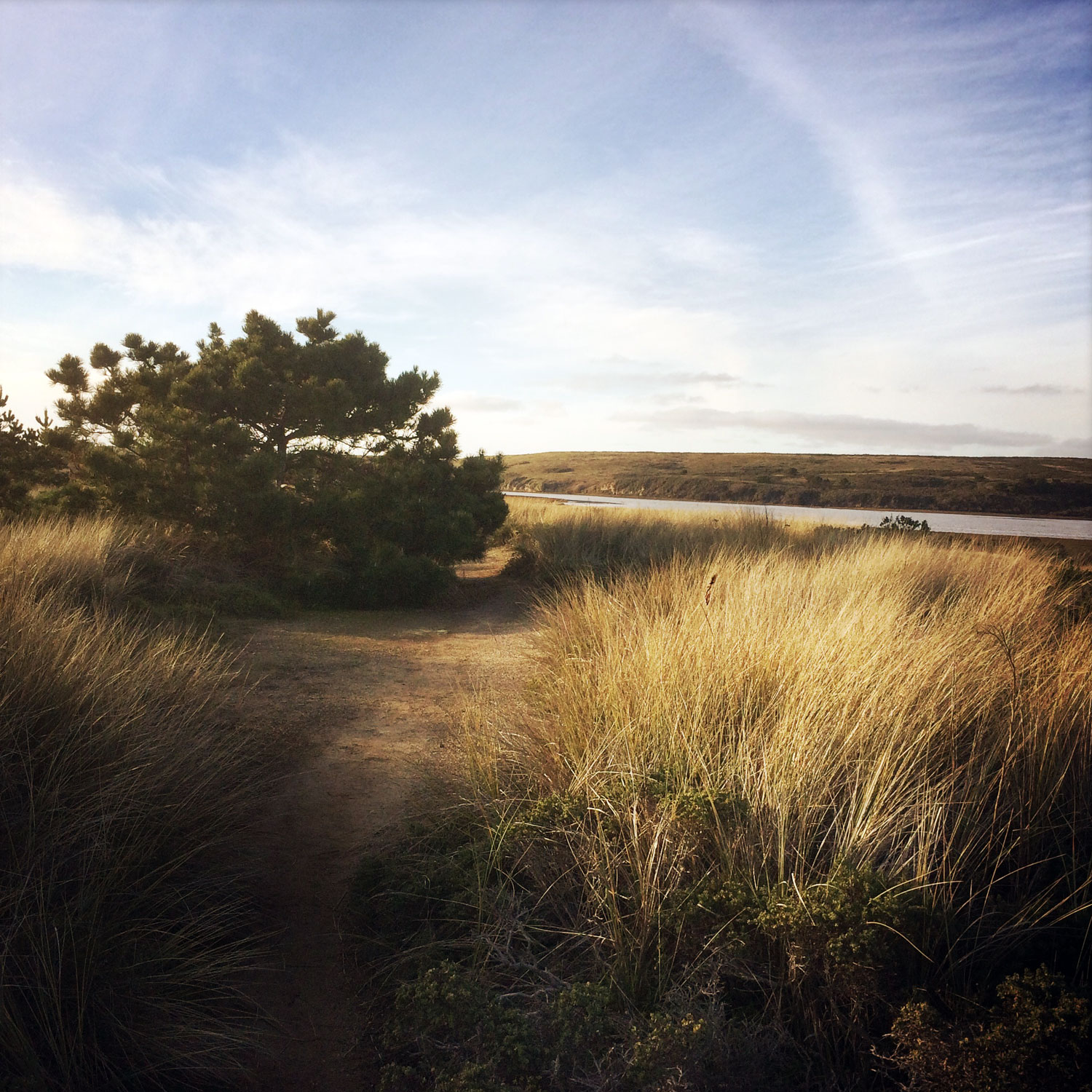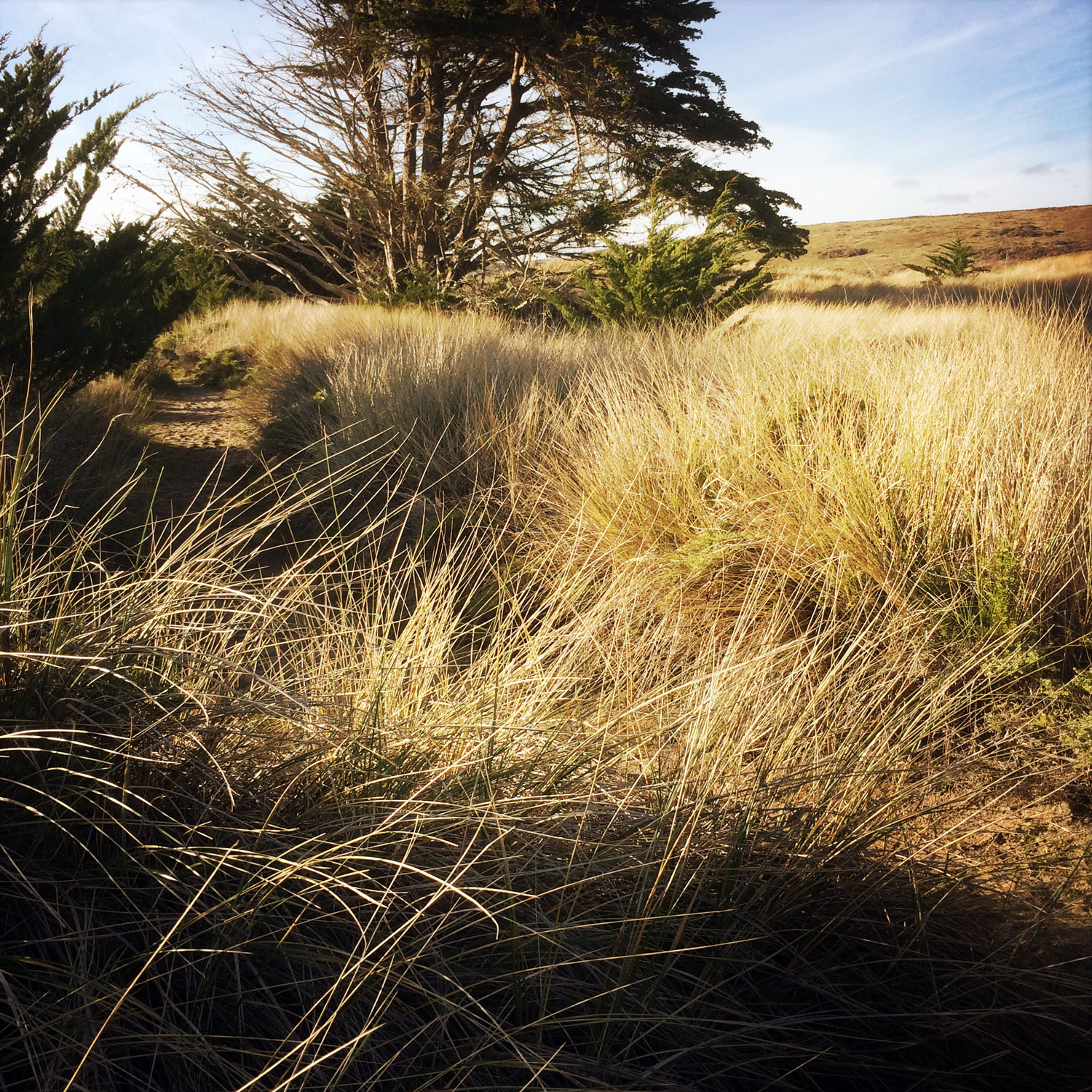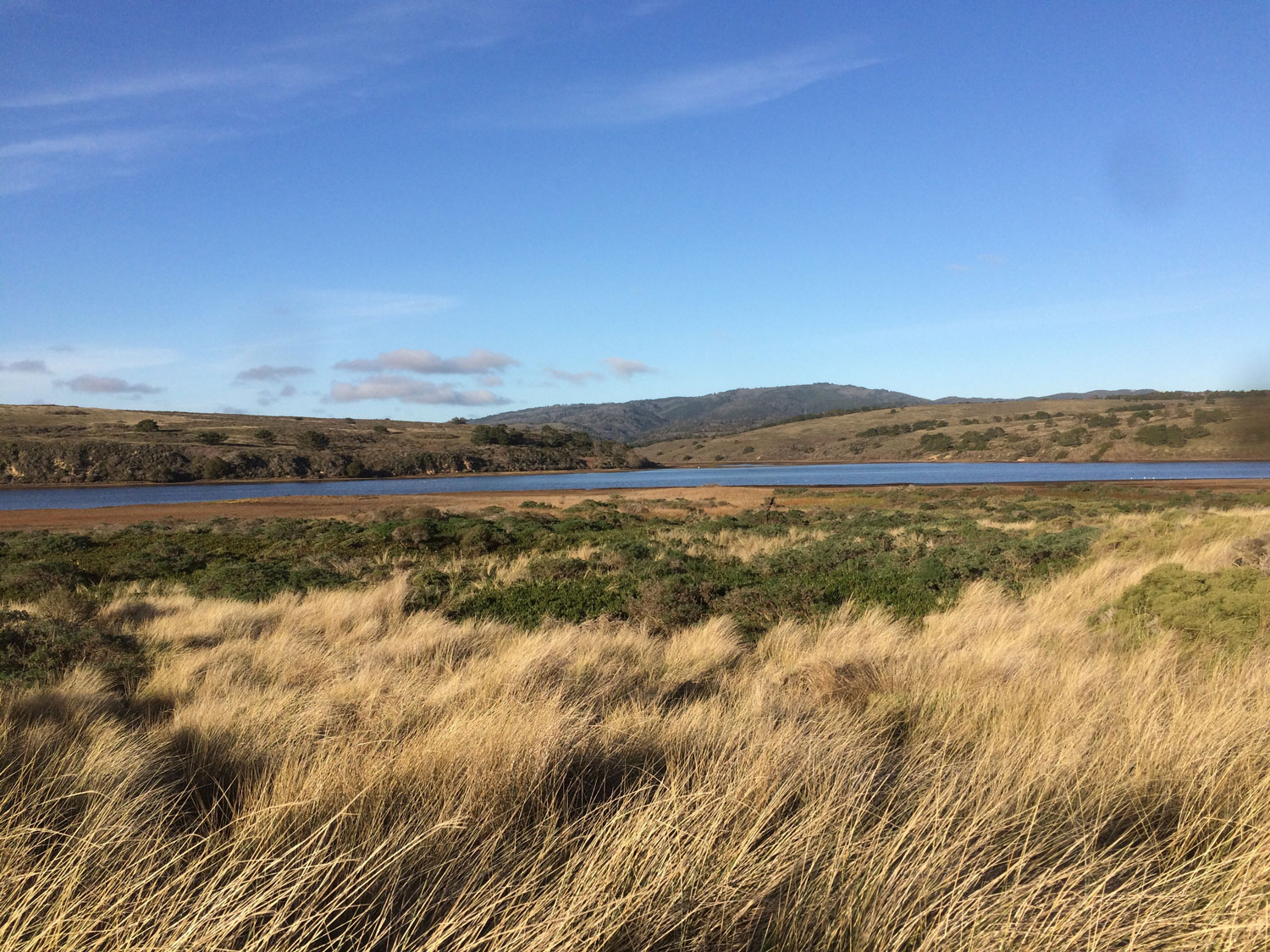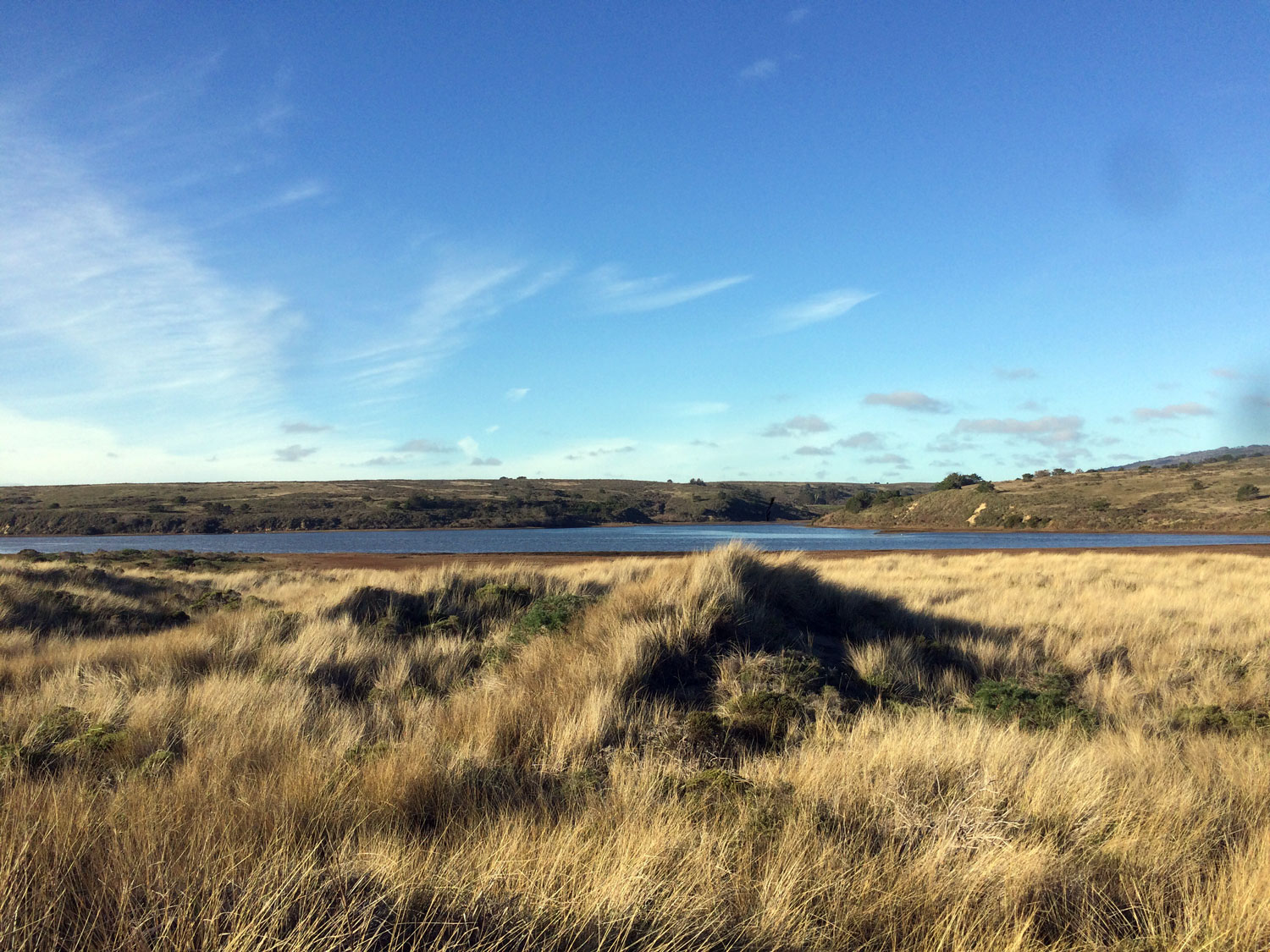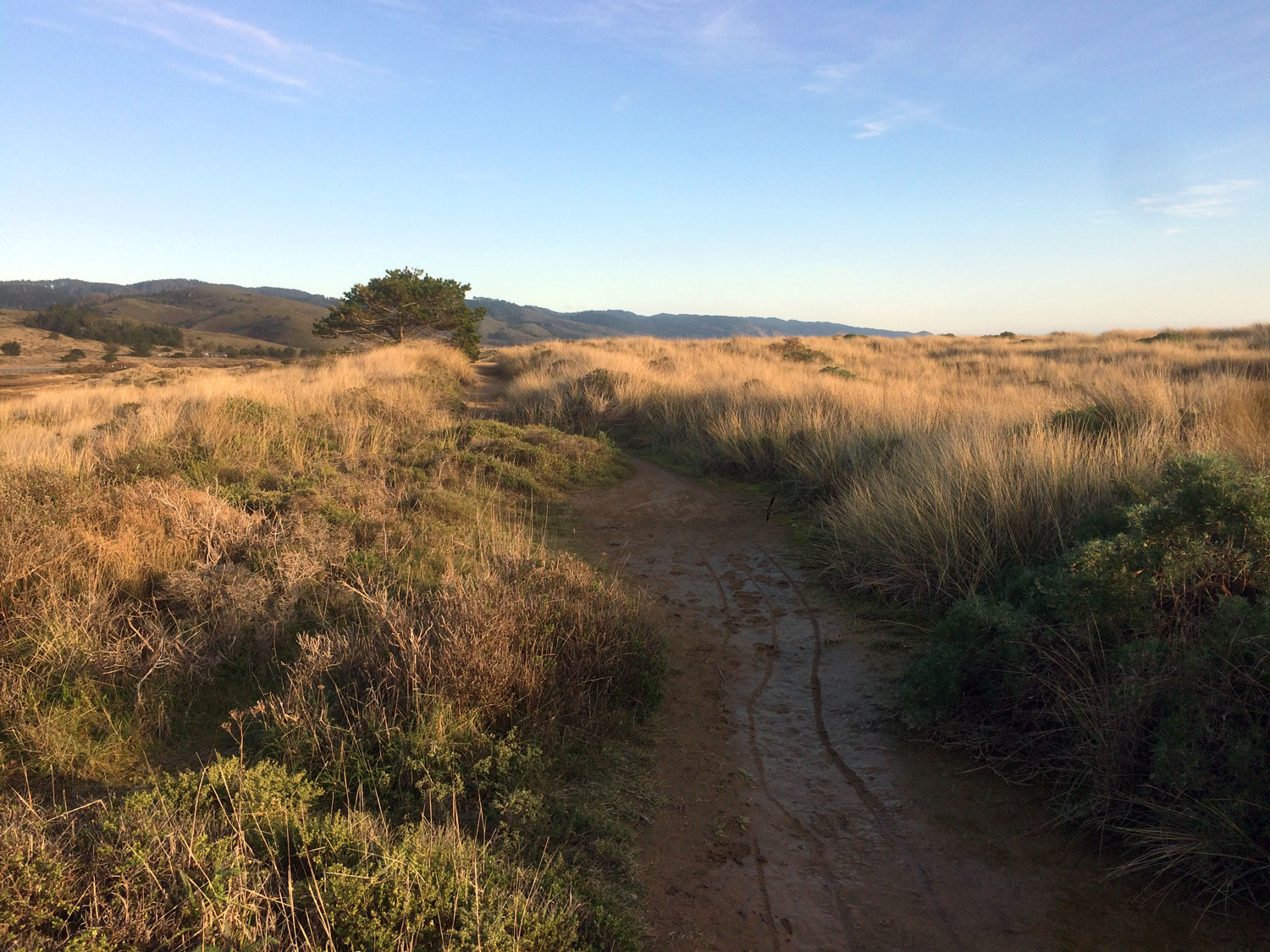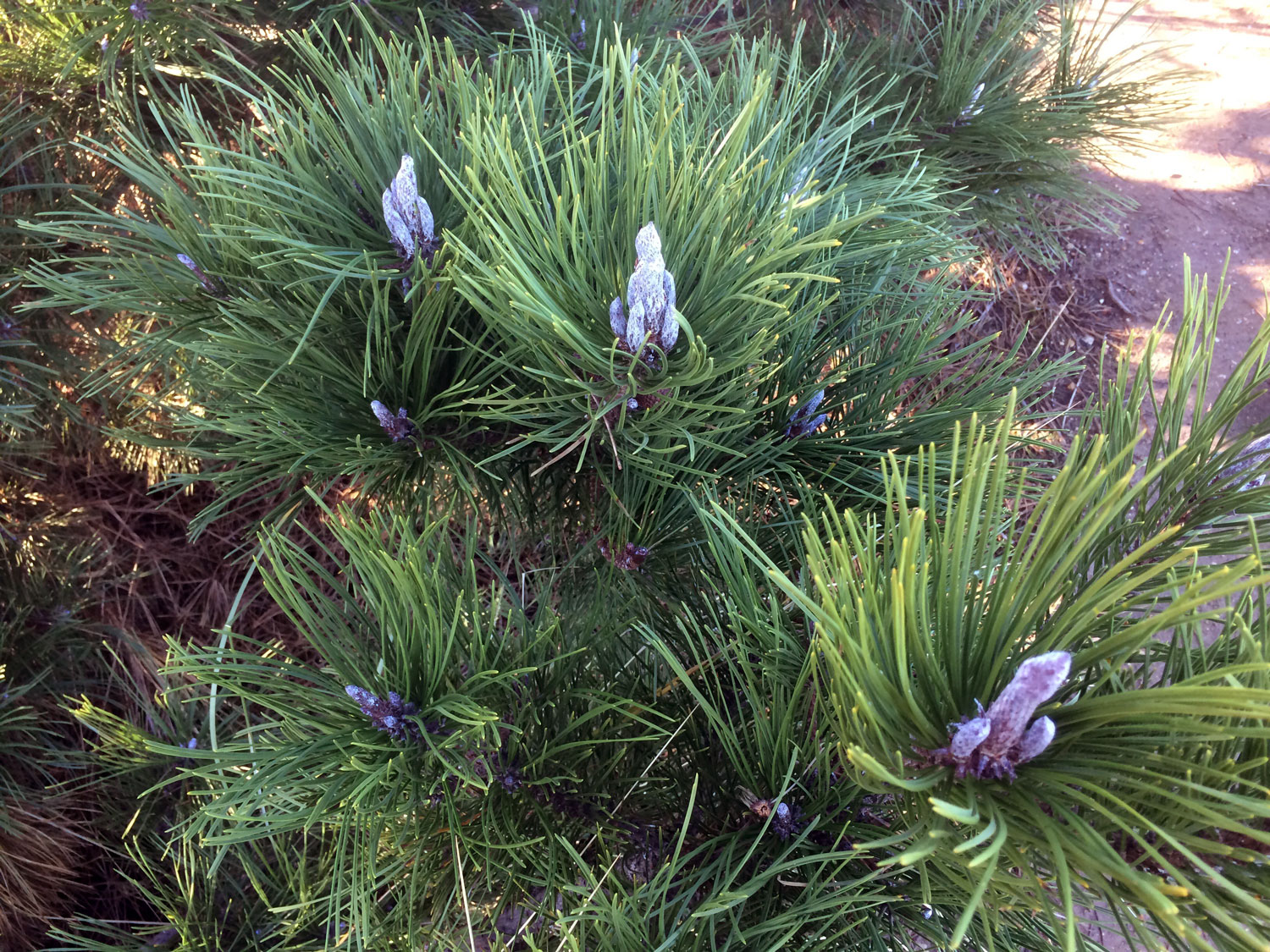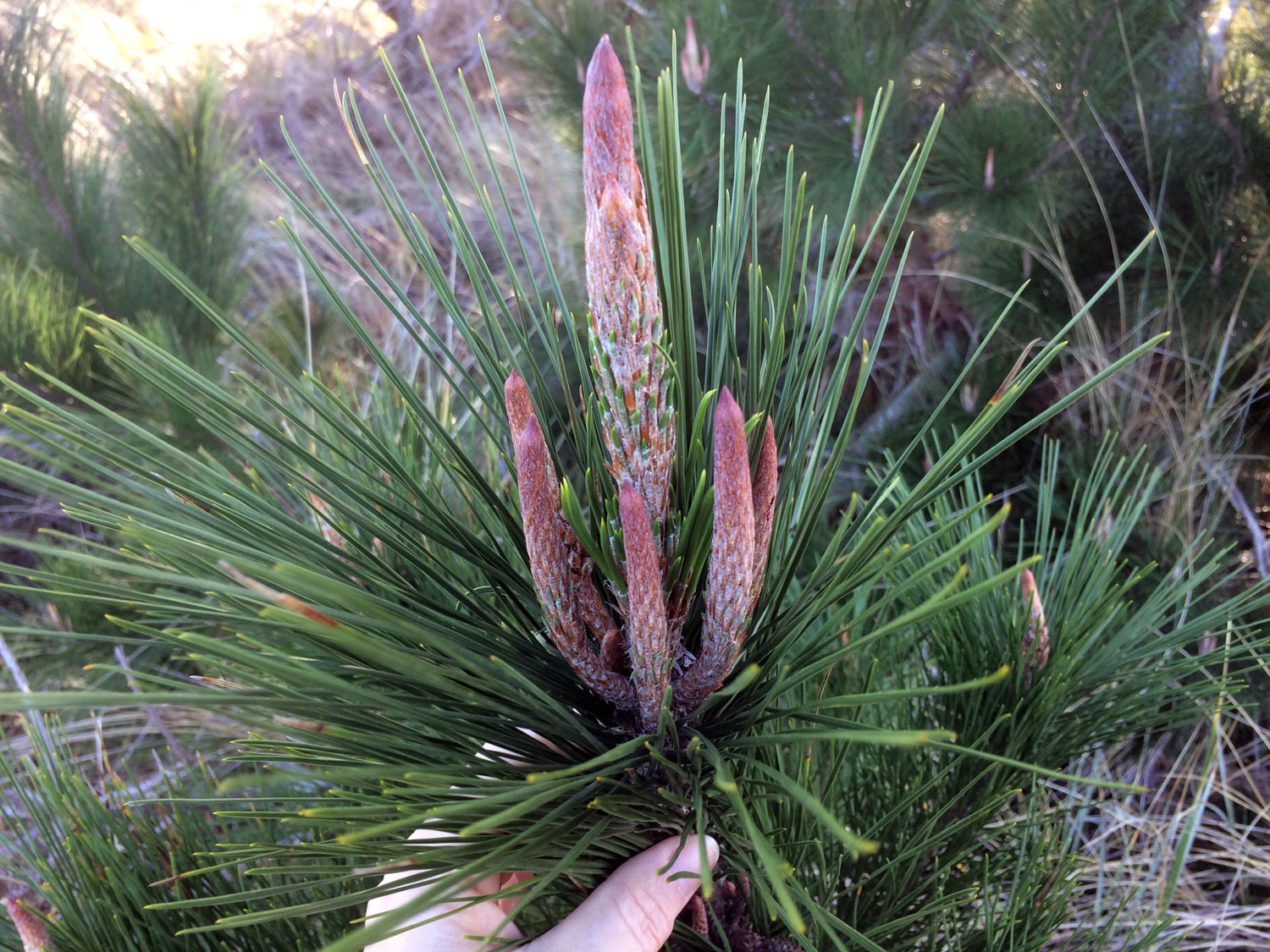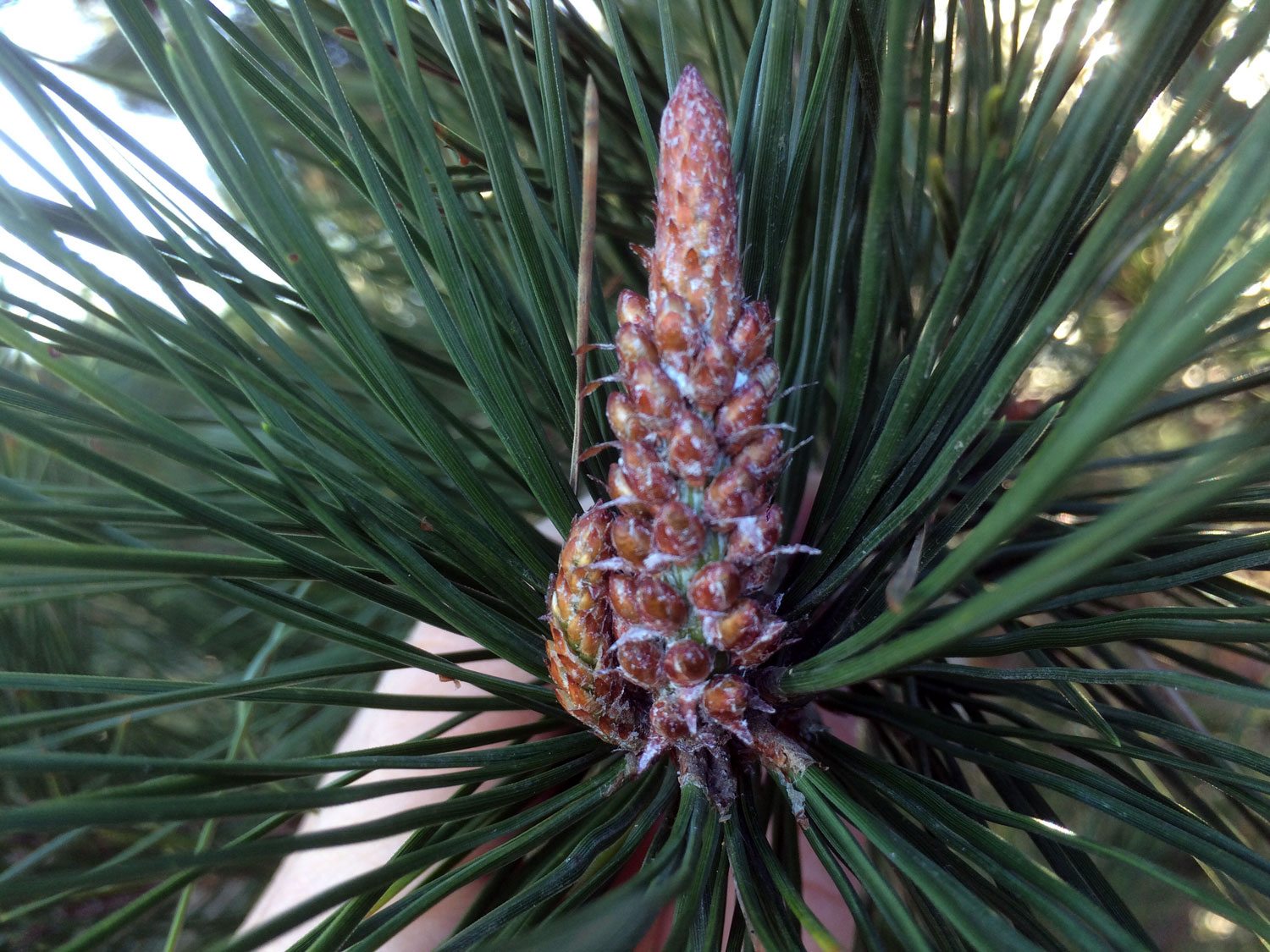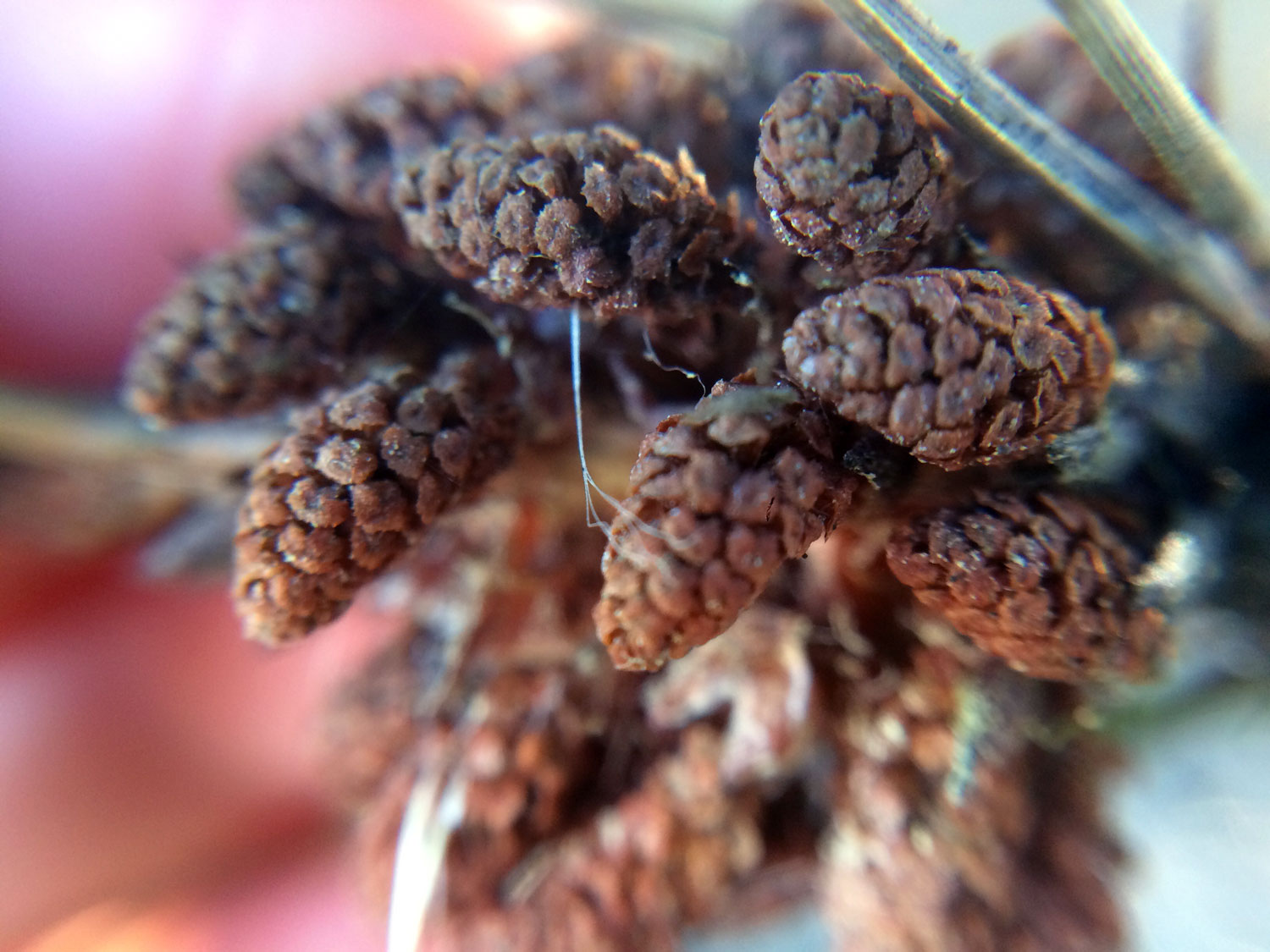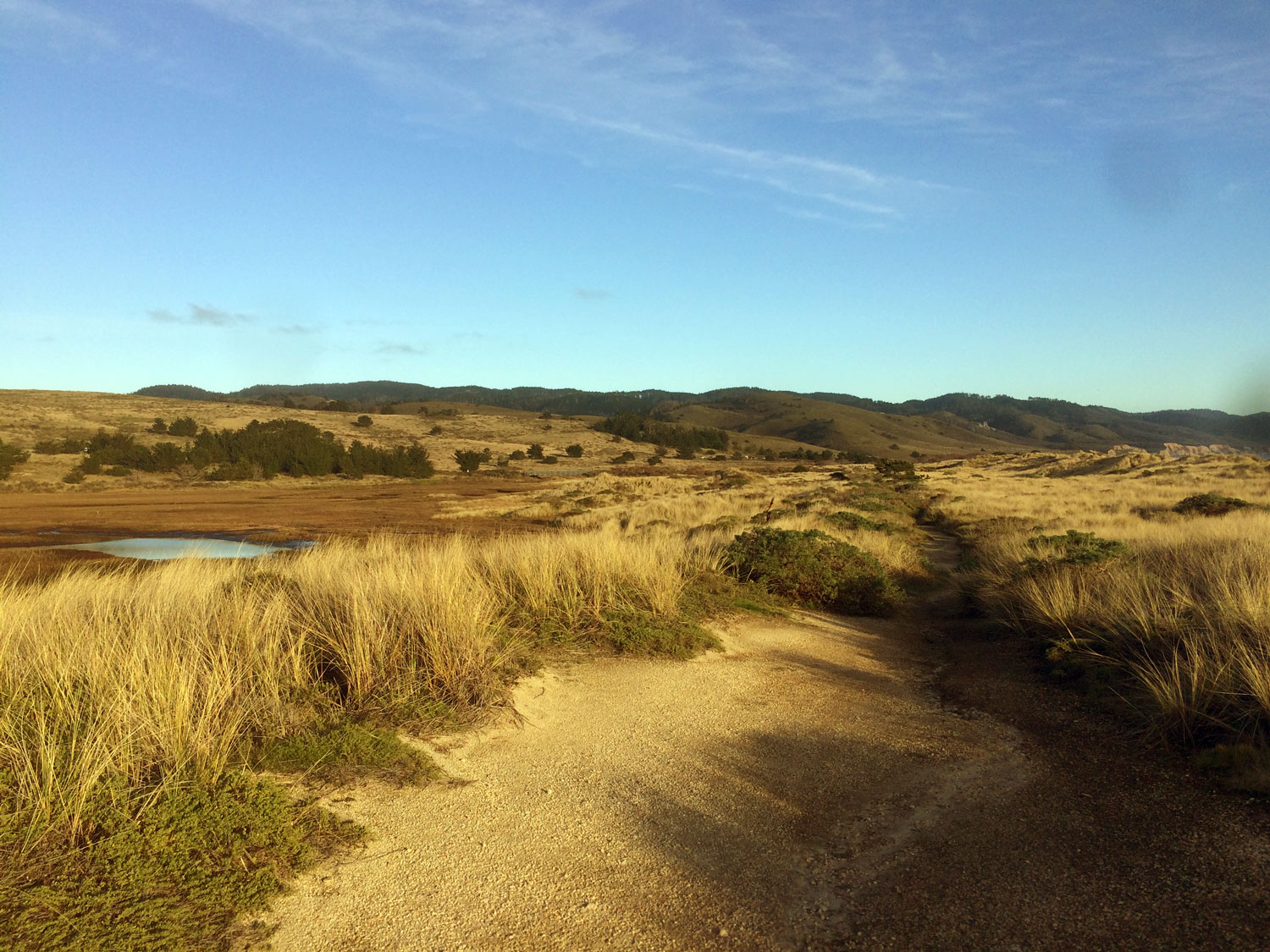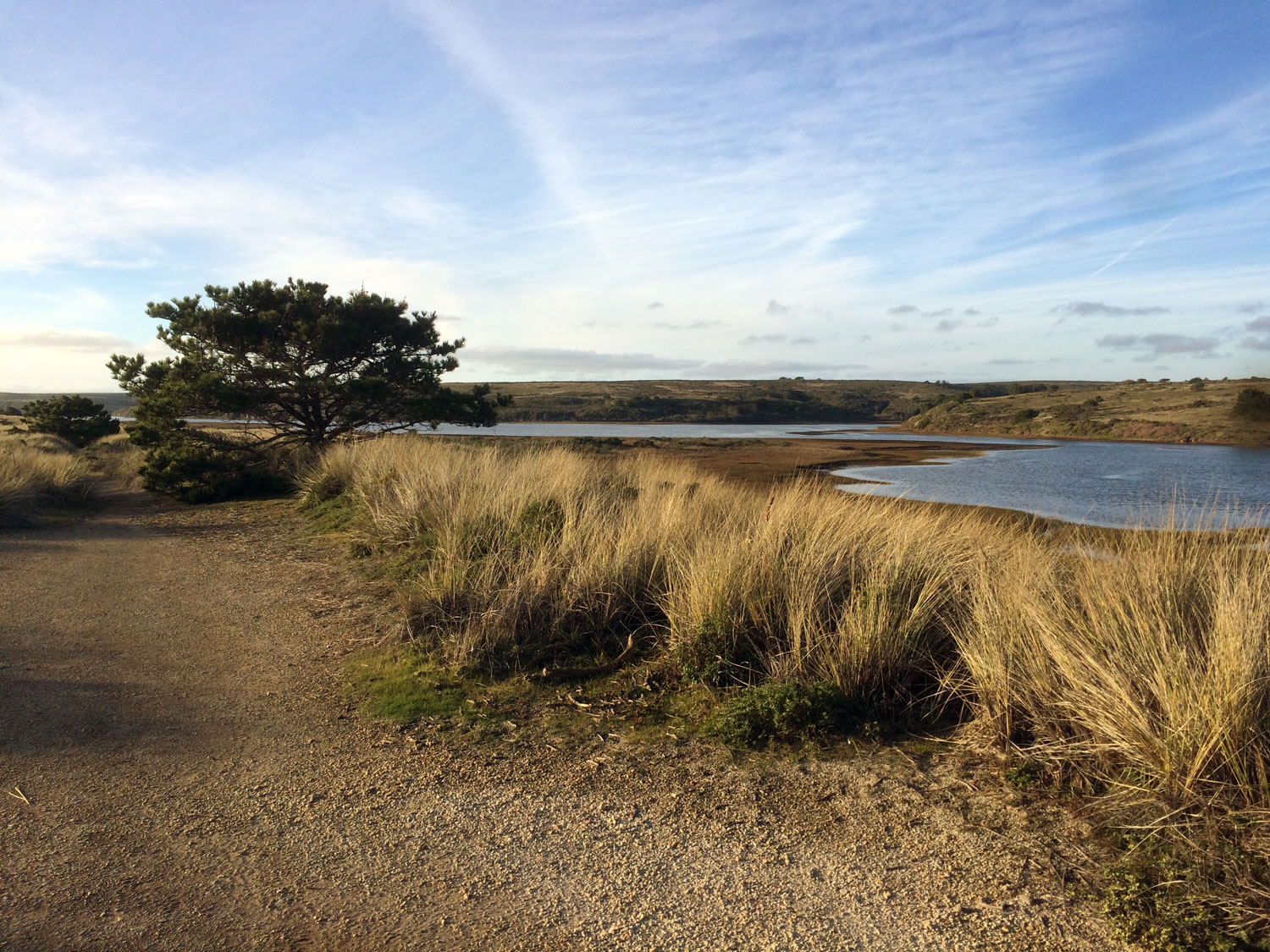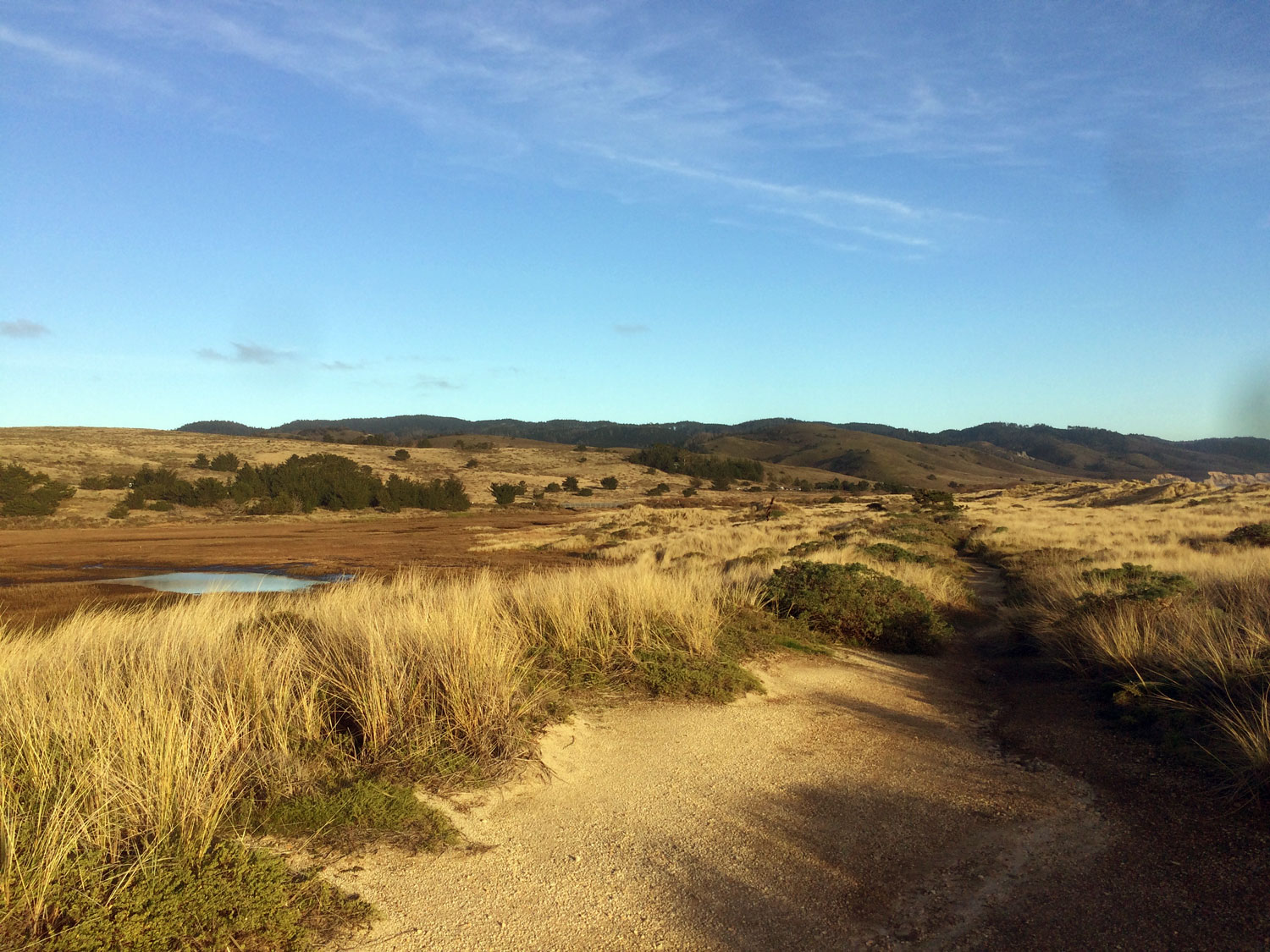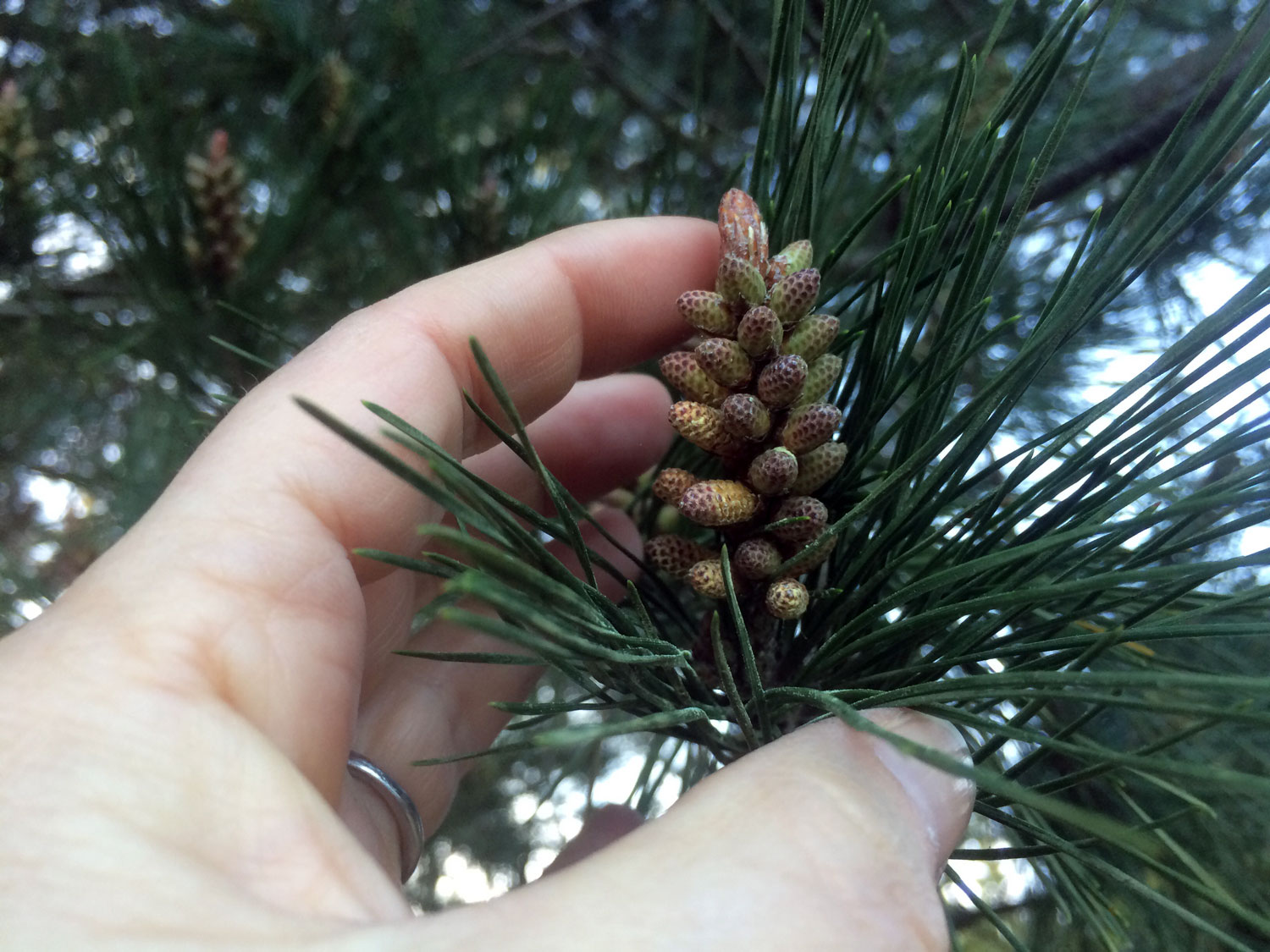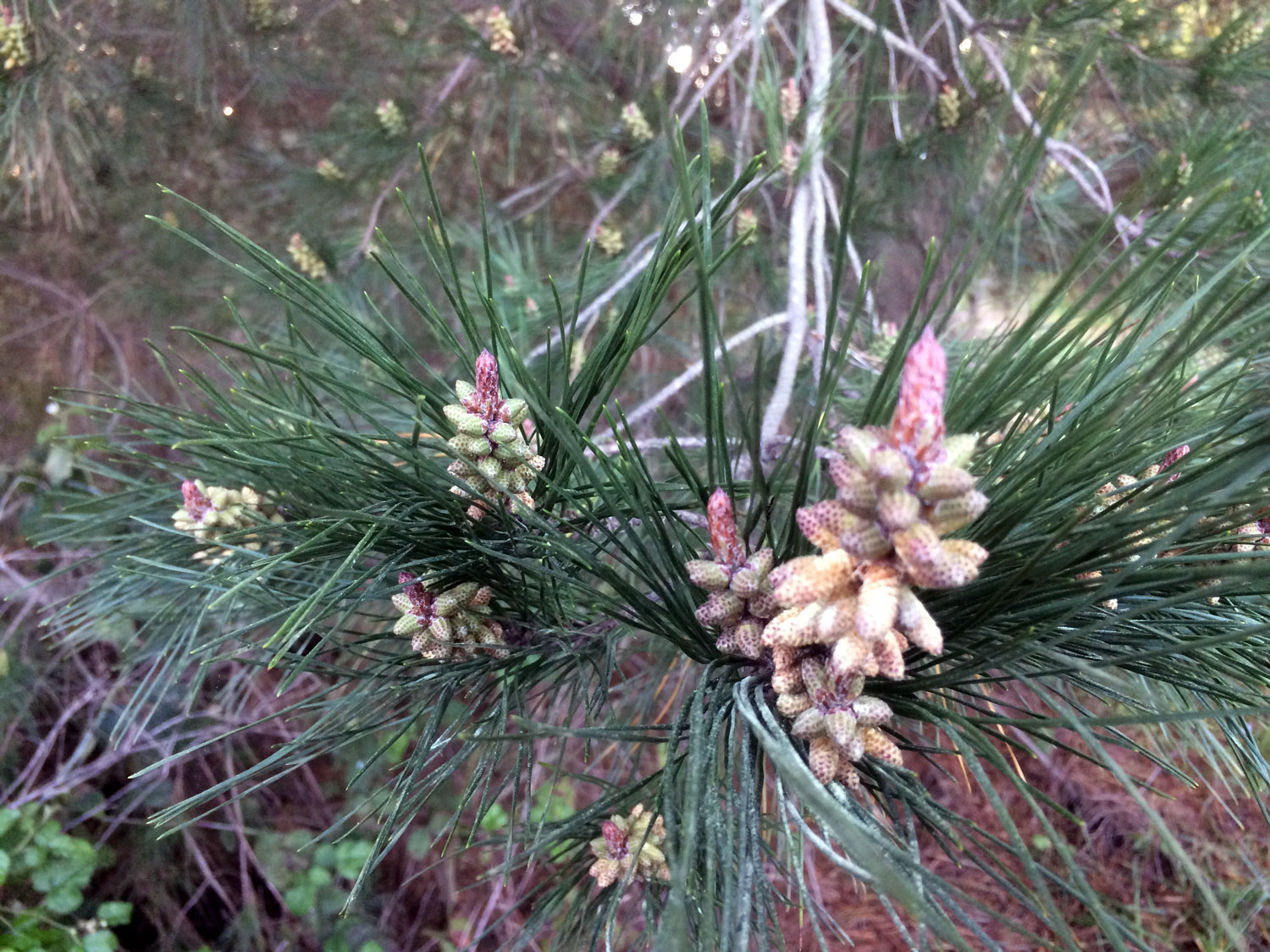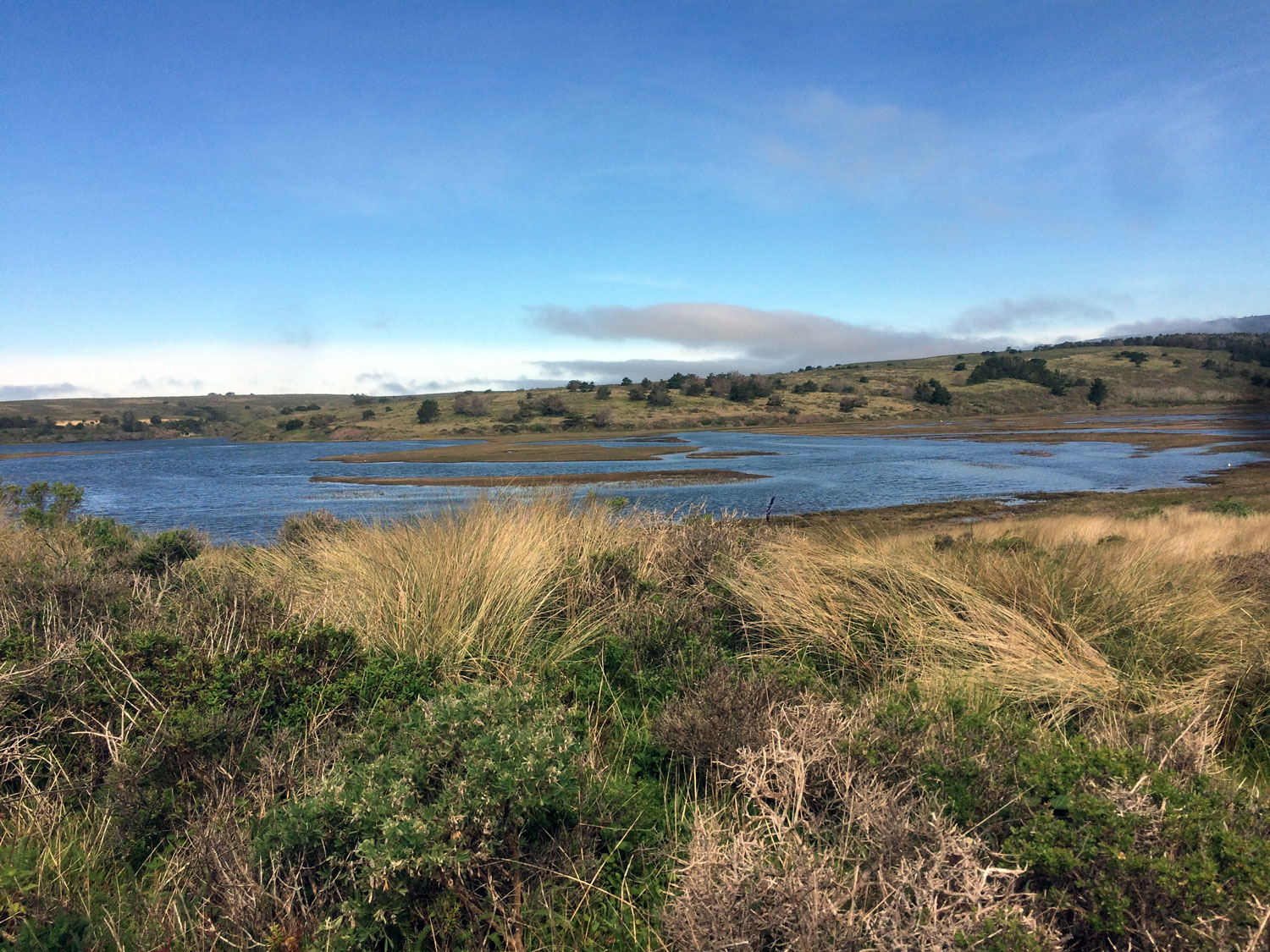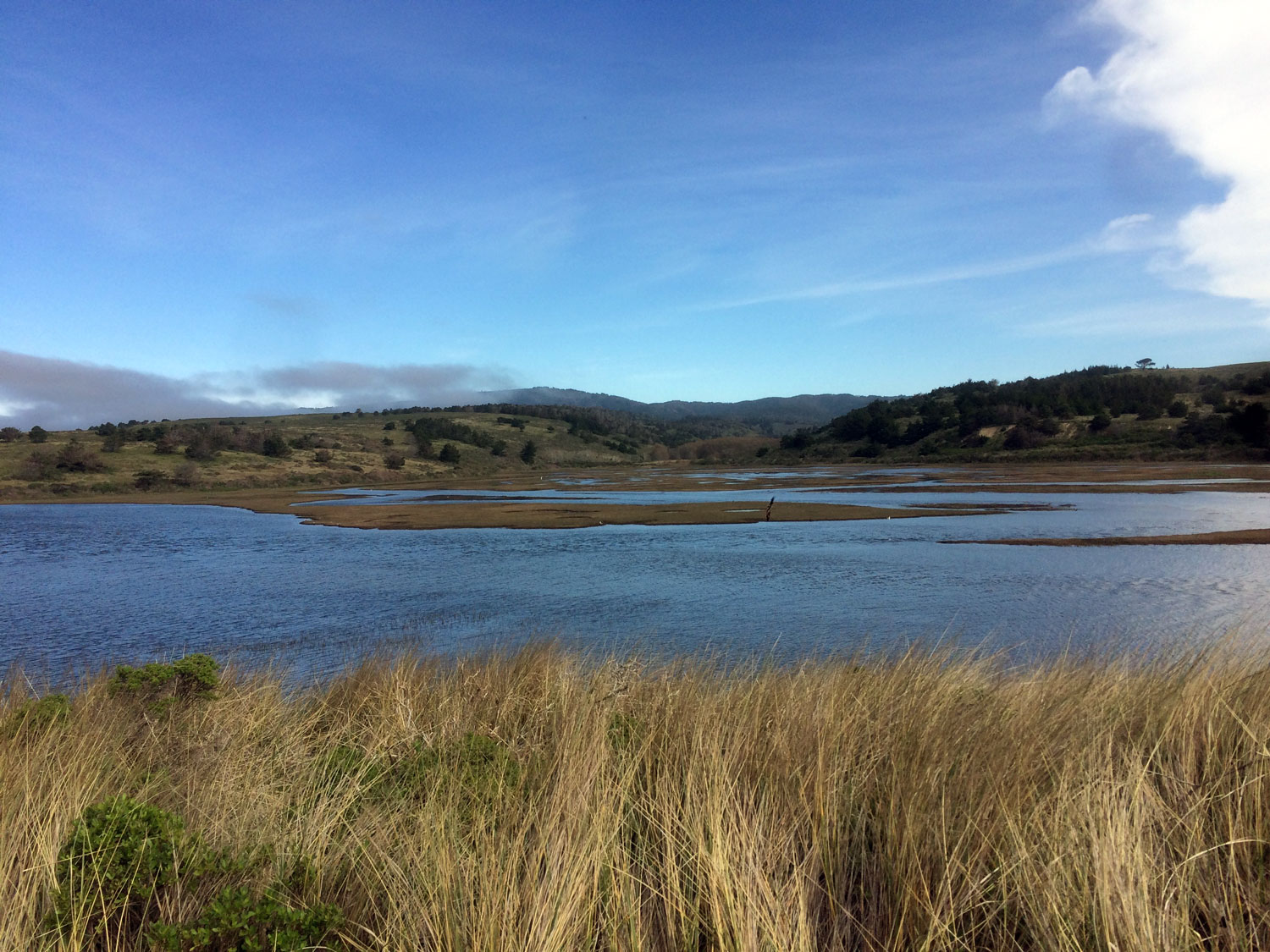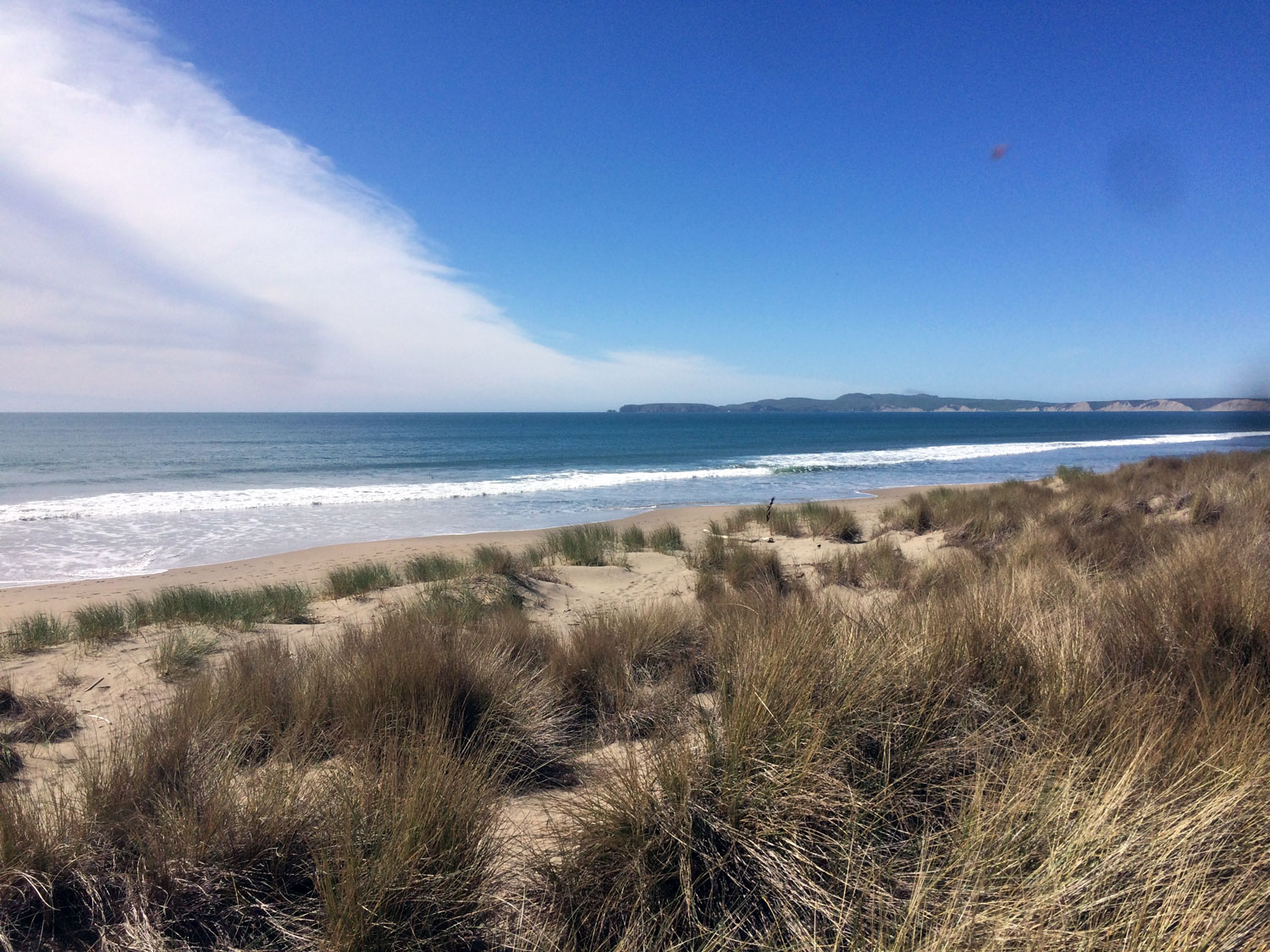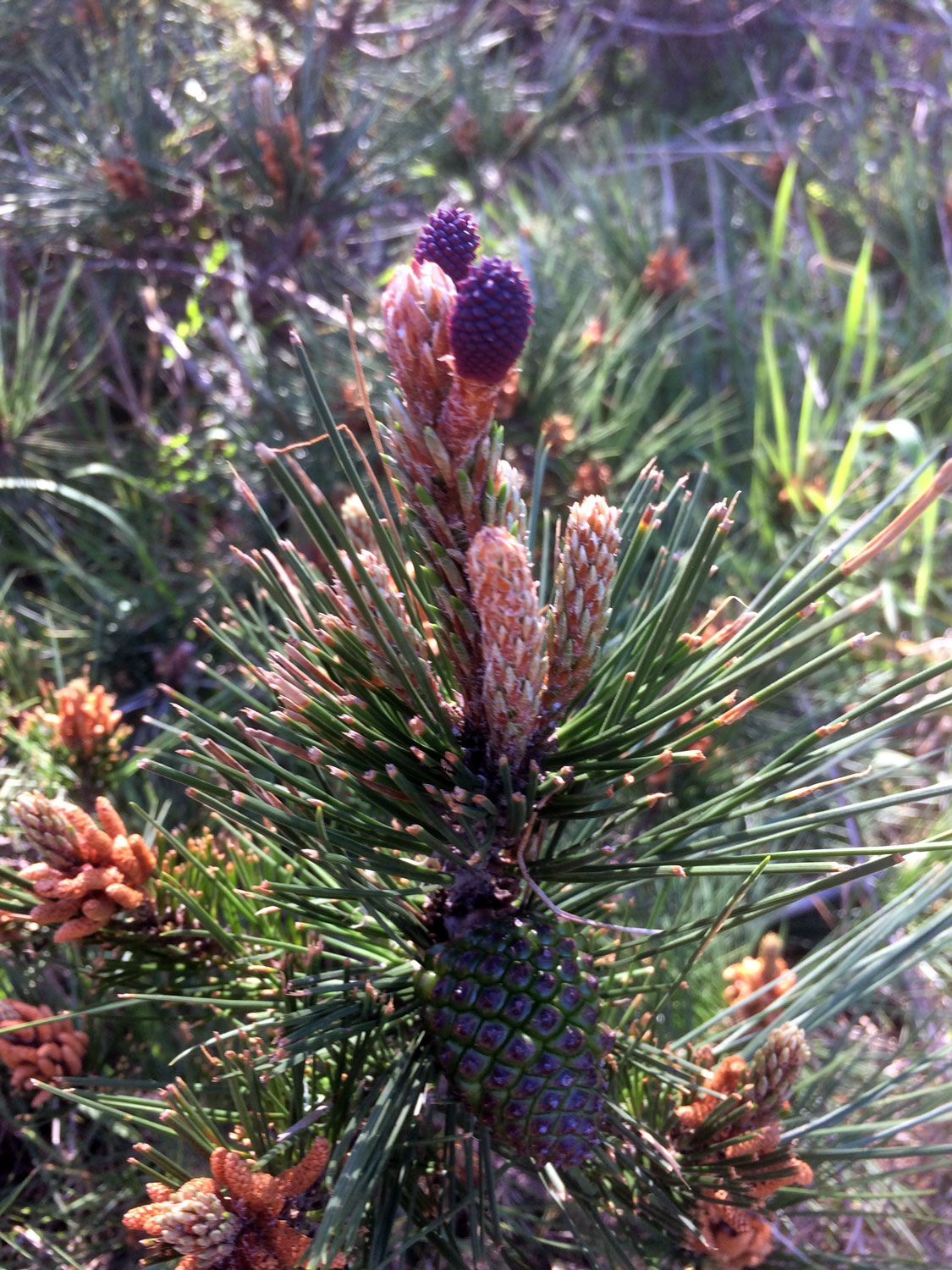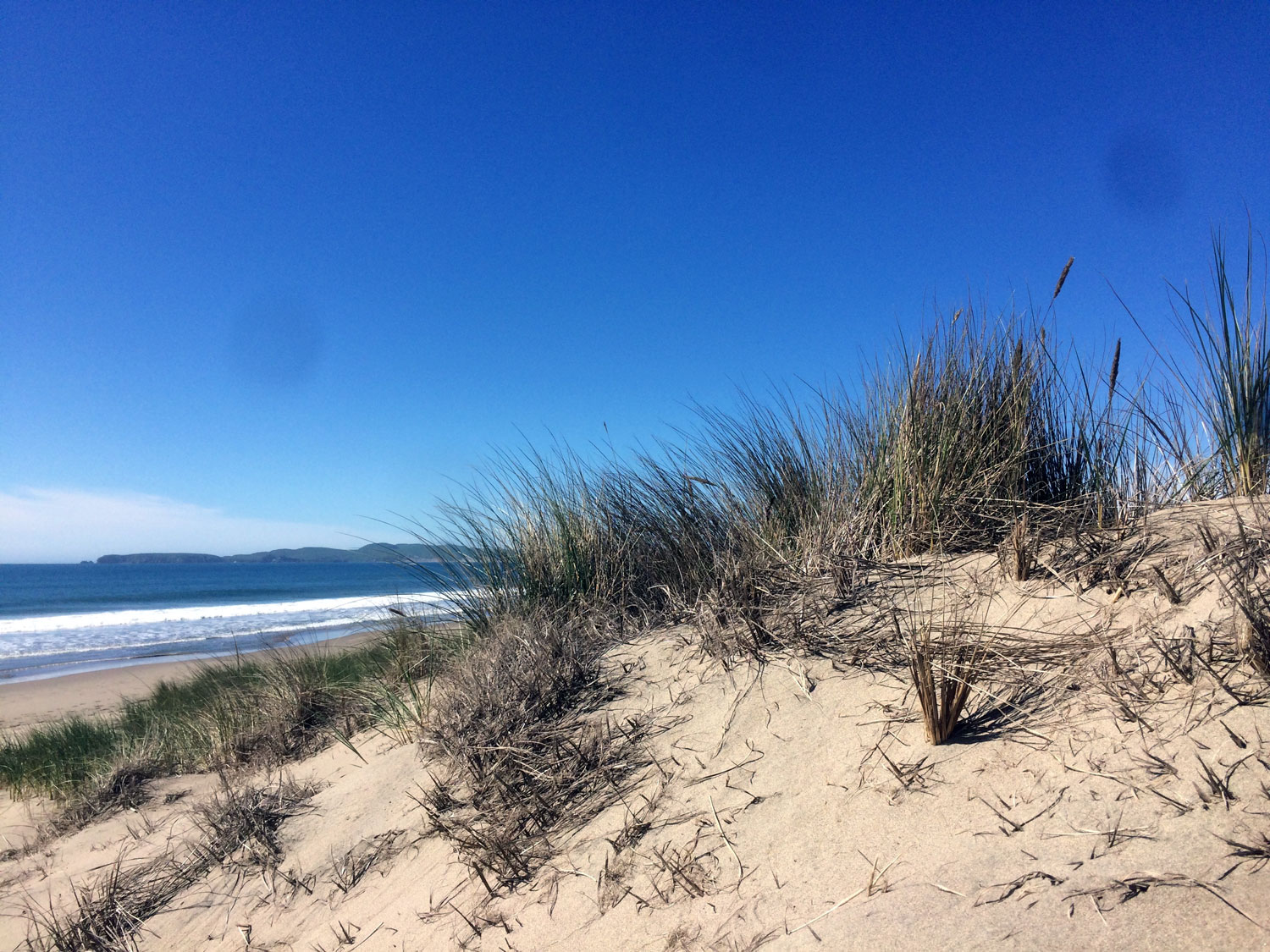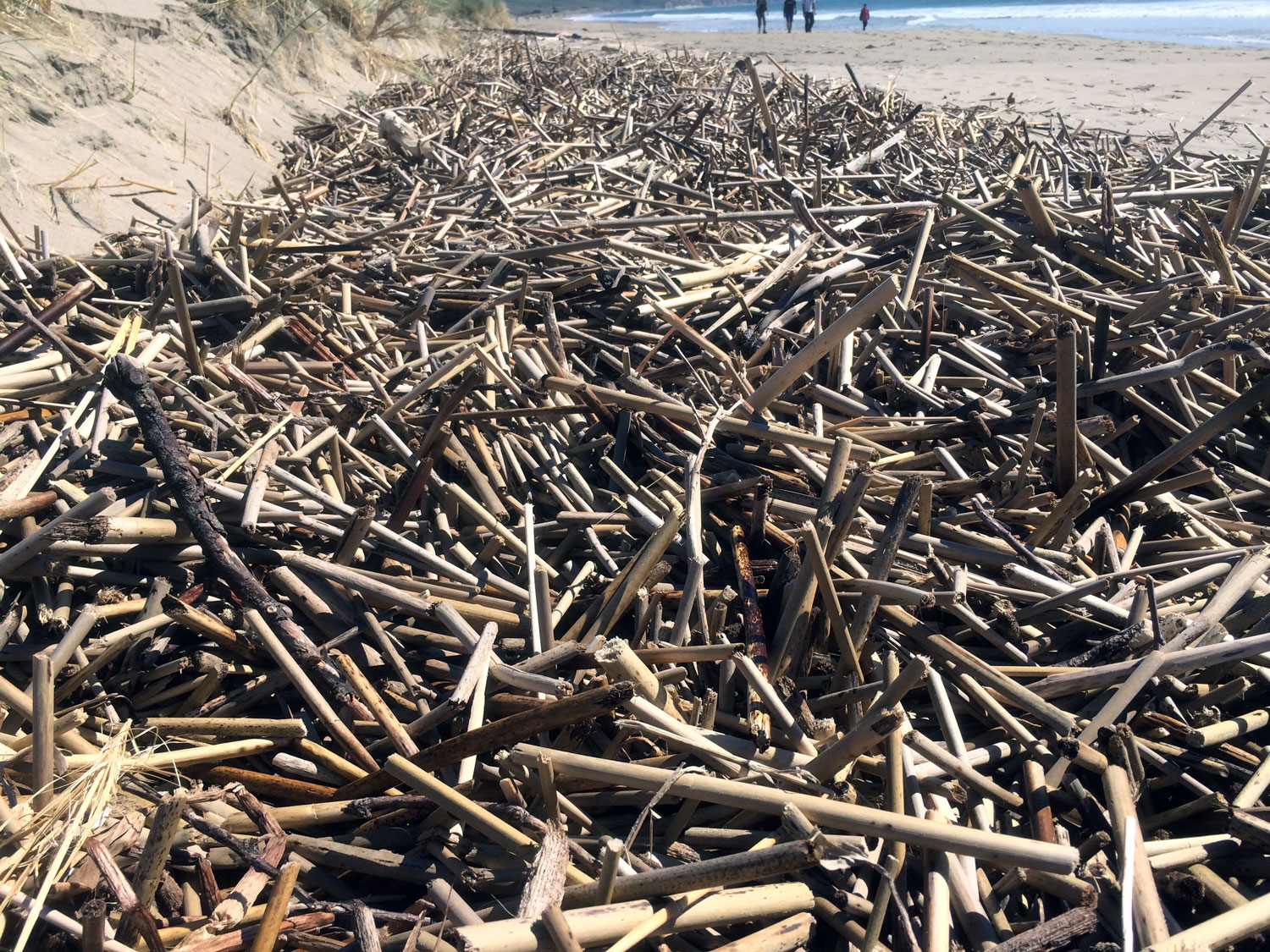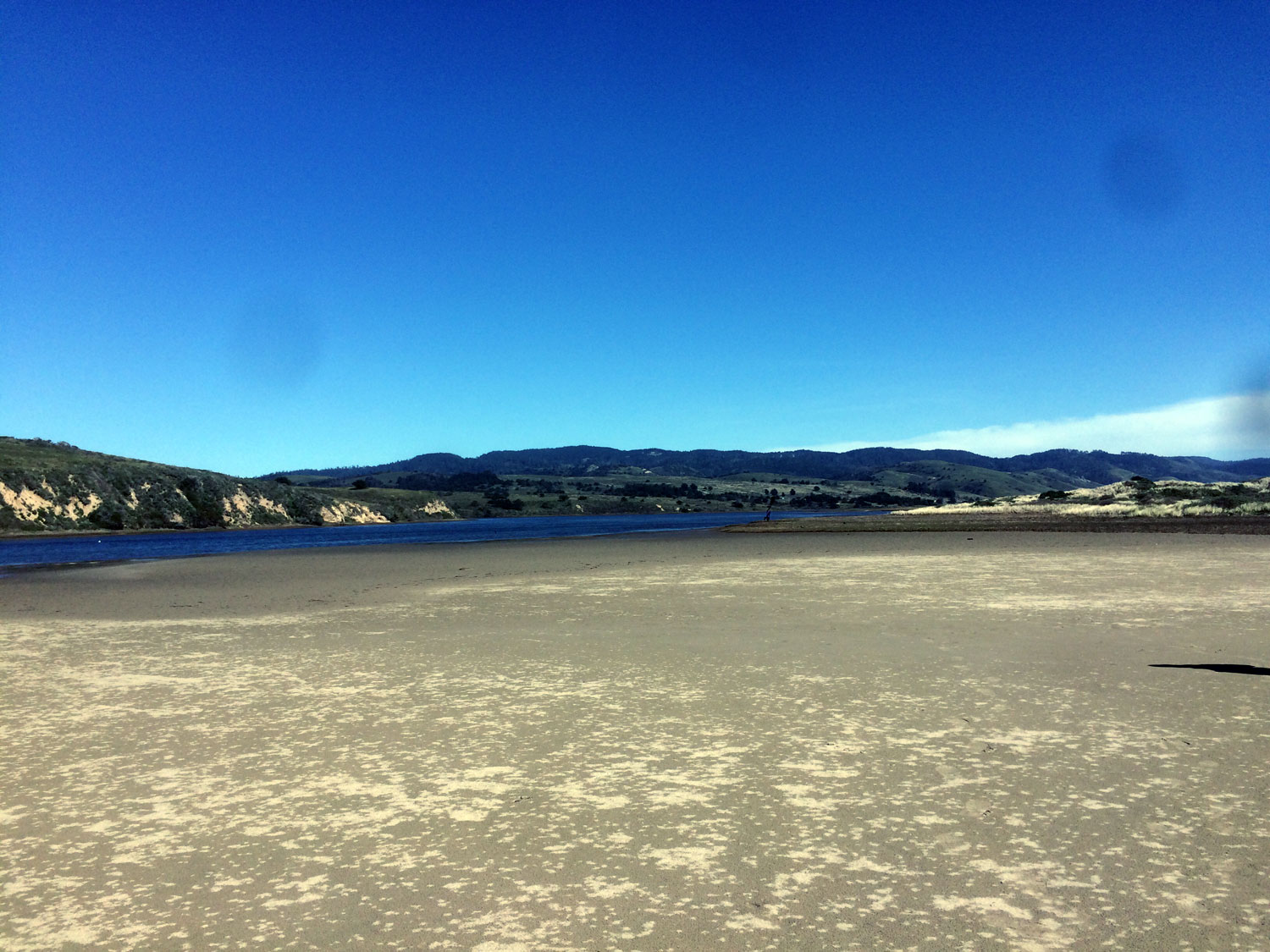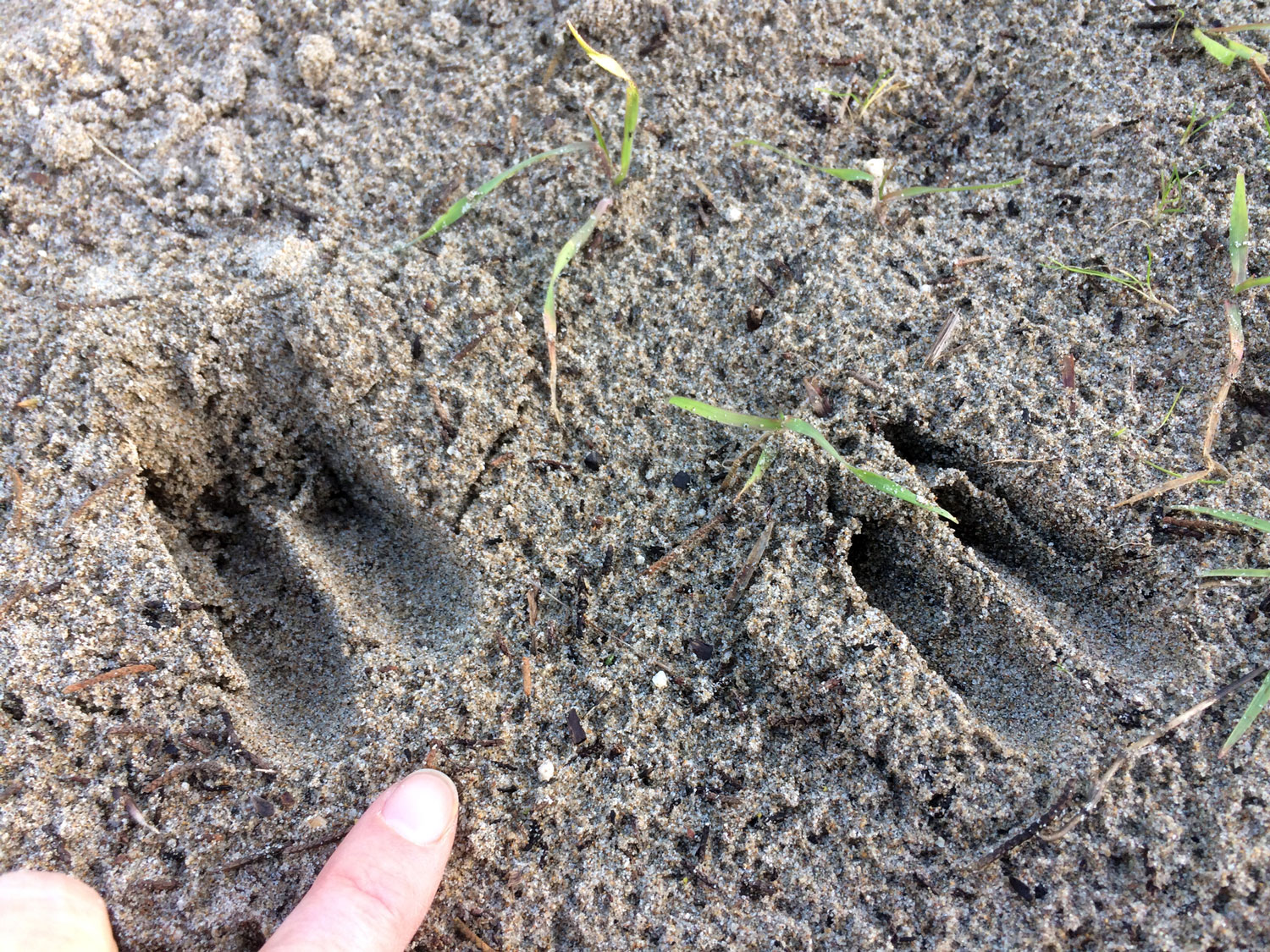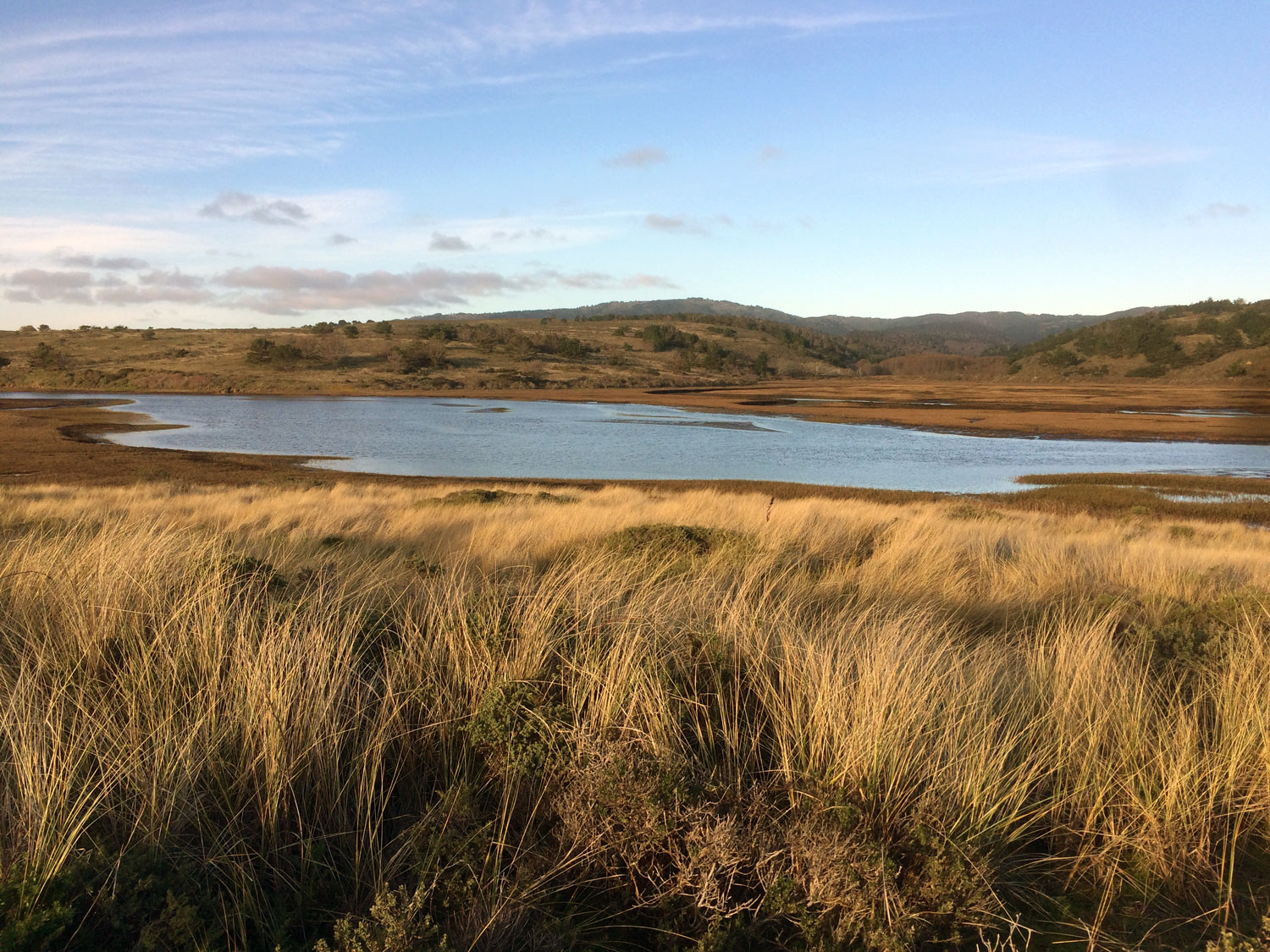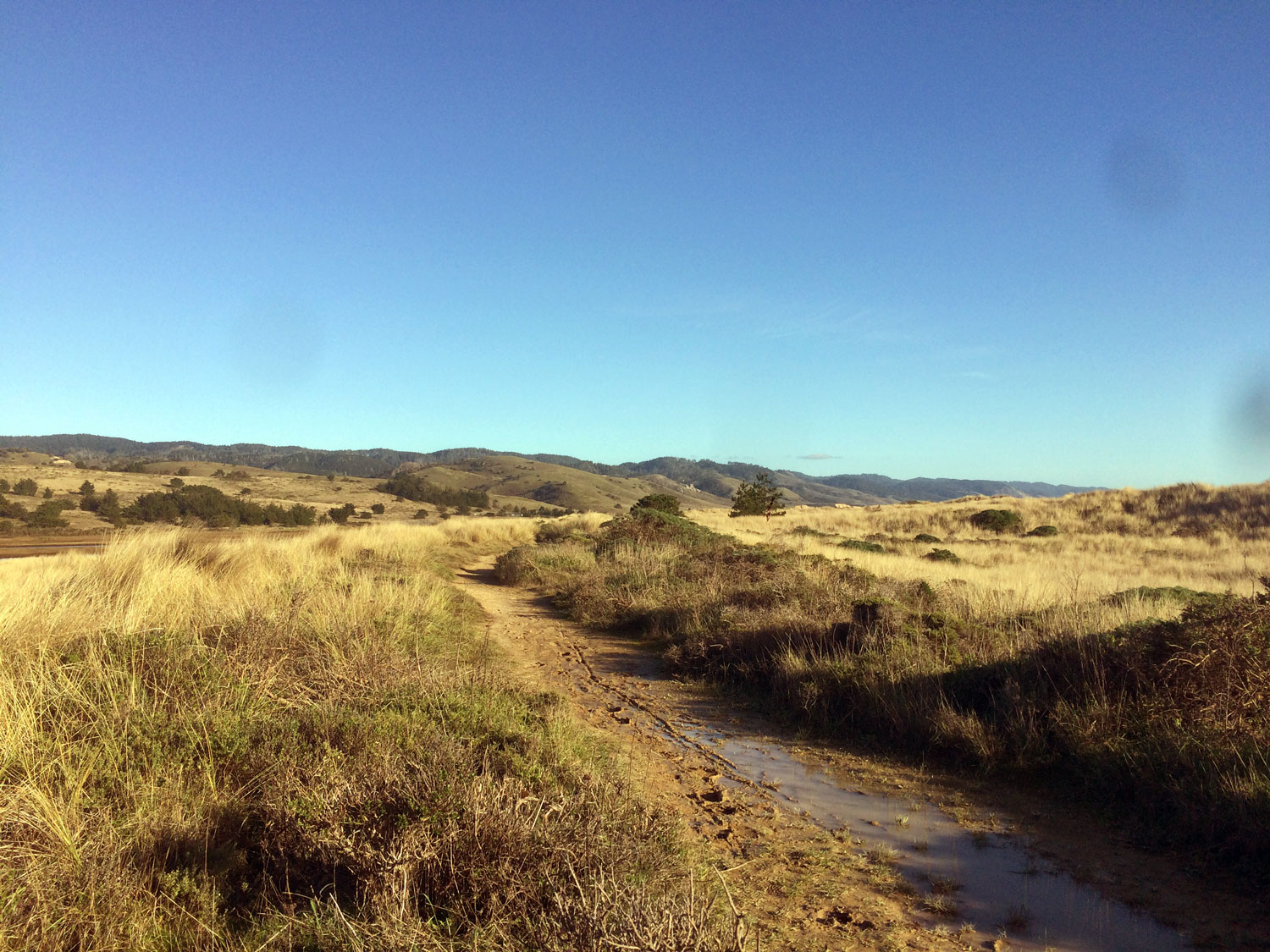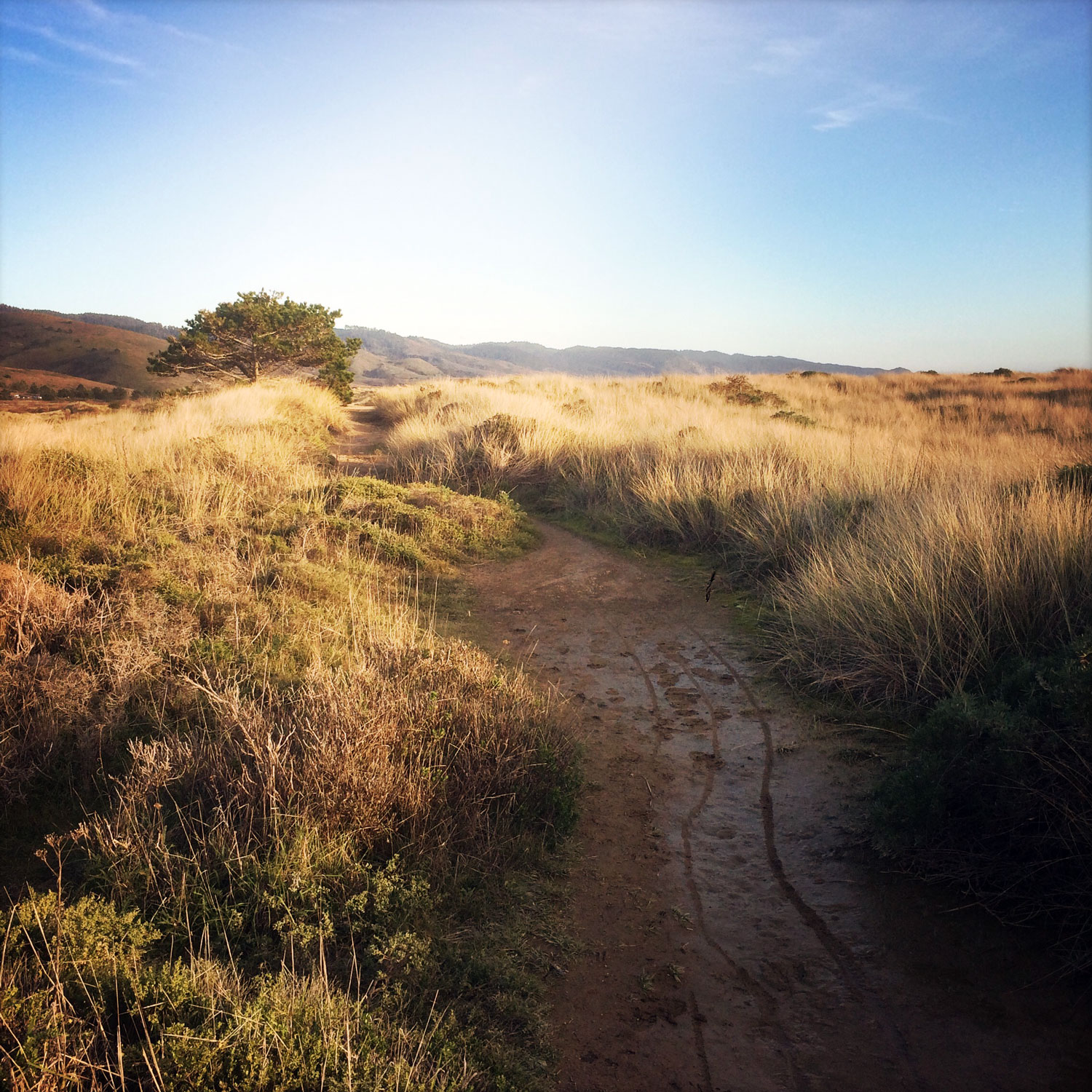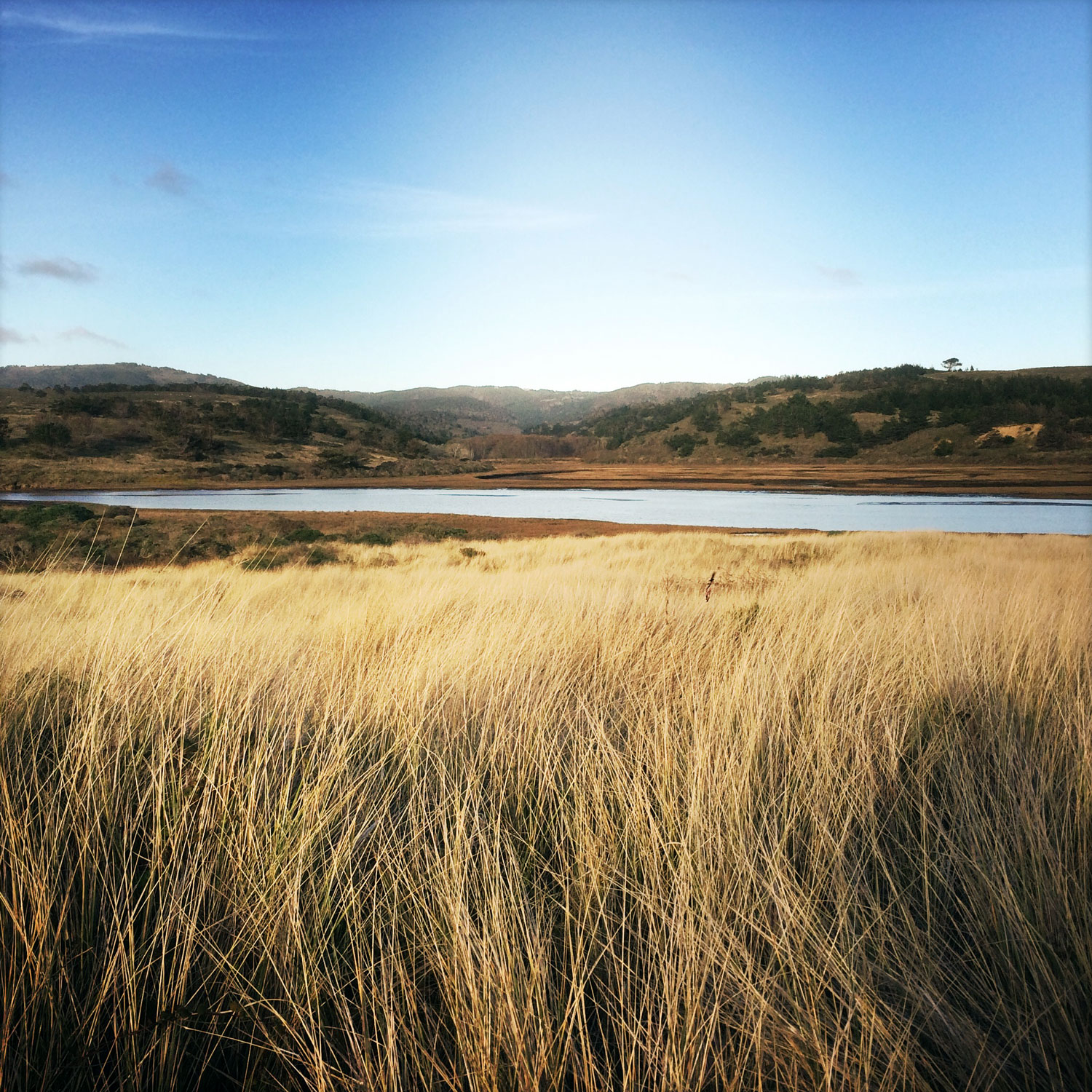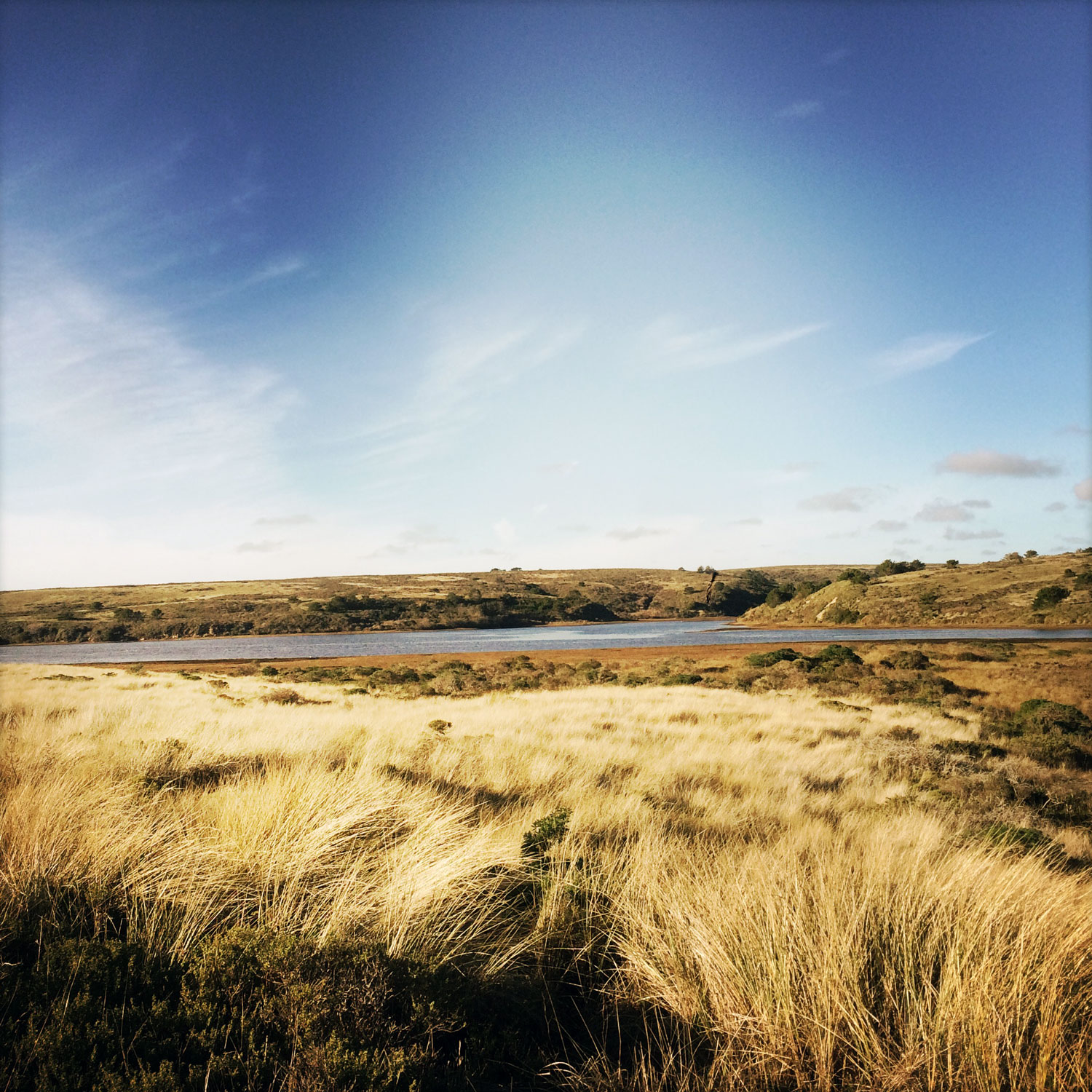Limantour Spit Trail
Trail length: less than a mile
Terrain: sandy beach, dunes, marsh, coastal scrub
Restroom? Yes
Parking: large parking lot
Kid friendly? Yes
Dates visited: 1/14/17, 3/11/17
Favorite plants: A friend observed an Elegant Rein Orchid (Platanthera elegans) on this short trail.
Plant list by the Marin chapter of the California Native Plant Society
Favorite spots:
The Limantour Spit is a short, narrow trail that runs between the dunes and marsh. From the parking lot, follow the path down to the picnic tables and toilets and cross the bridge over the marsh. The trailhead is to the right, between the bridge and the dunes. The trail is lined with tall grasses and brush that can be scratchy on bare legs, and in the rainy season, the trail can be muddy. You’ll be treated to panoramic views of the marsh and coastal scrub areas to the north and east. At many points along the trail, you can climb over the dunes and onto Limantour Beach. The spit trail is fully exposed with only a few pines and cypress trees scattered here and there.
This area is rich in shorebirds and wildlife. You never know what you might see. On one visit, an osprey with a fish in its talons flew overhead from the ocean toward the marsh. Earlier that morning, two coyotes were frolicking in the marsh, jumping up and down in the water. Limantour is a good place for wildlife tracking. The tall beach grasses are hiding places for rabbits and mice. You will see the tiny circuitous tracks of mice left as they foraged. Bring your binoculars to see birds, whales, and even Tule elk in the distant hills.
Volunteer Opportunity: Marine Protected Area (MPA) Watch
Since August 2017, I've been volunteering with the Marin Marine Protected Area Watch (Marin MPA Watch). Marine Protected Areas are important, vulnerable coastal waters that have been designated for protection under California State Law. Volunteers do a simple survey of activity on the beach and offshore (using binoculars). Volunteers are vitally important to provide this survey information which informs MPA management and the California Department of Fish and Wildlife.
It’s a great way to:
get outside and breath some fresh ocean air
do easy exercise strolling on the beach
learn about tides
spend time with family and friends
feel good about volunteering
If you are interested in volunteering with the Marin MPA Watch, visit the Environmental Action Committee's MPA website.


